Namibia is a land of spectacular landscapes, endless skies, barren deserts, rugged mountain ranges and breathtaking wildlife - participants of this self-drive safari experience something of all this.
On this trip you first drive south to the great sand dunes of Sossusvlei and the beautiful Namib desert. The road north then takes you along the fringe of the desert and eventually to the coastal town of Swakopmund. Your next stop are the rock engravings of Twyfelfontein and the volcanic rock landscape of Damaraland where desert adapted elephants roam. The road then turns east to Etosha National Park. You have plenty of time to visit the many waterholes and experience a variety of animals up close. On your way back to Windhoek you will stop at Okonjima and the Africat Foundation where there is a great chance to see leopard and cheetah.
This self-drive journey starts in Windhoek, where you pick up your vehicle. We definitely recommend a first night in Windhoek, which gives you enough time to buy some snacks and water for the trip. Apart from the few paved main roads, most of the roads you drive are gravel roads. Participants in this journey are stirring up a lot of dust! You visit the most beautiful areas of Namibia and experience the entire fascination of this huge country.

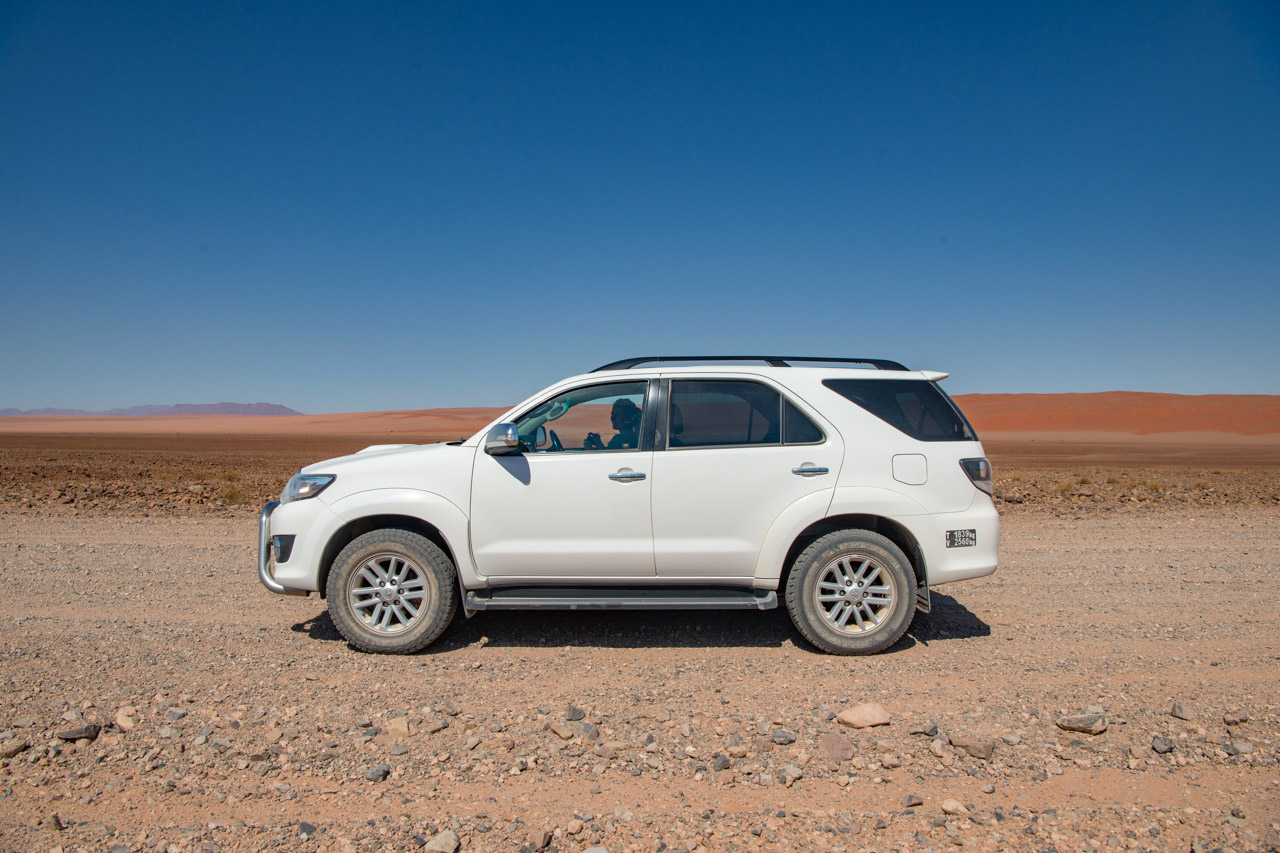


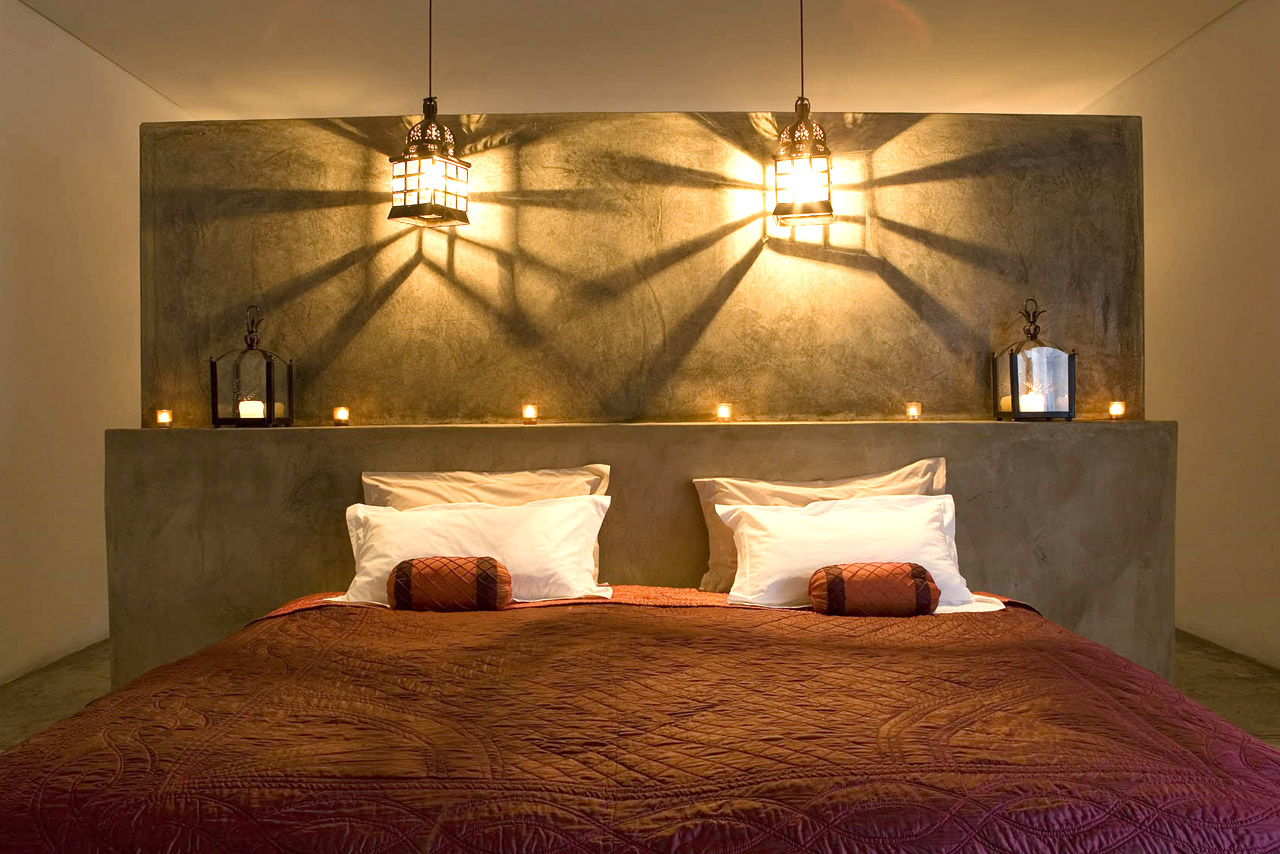
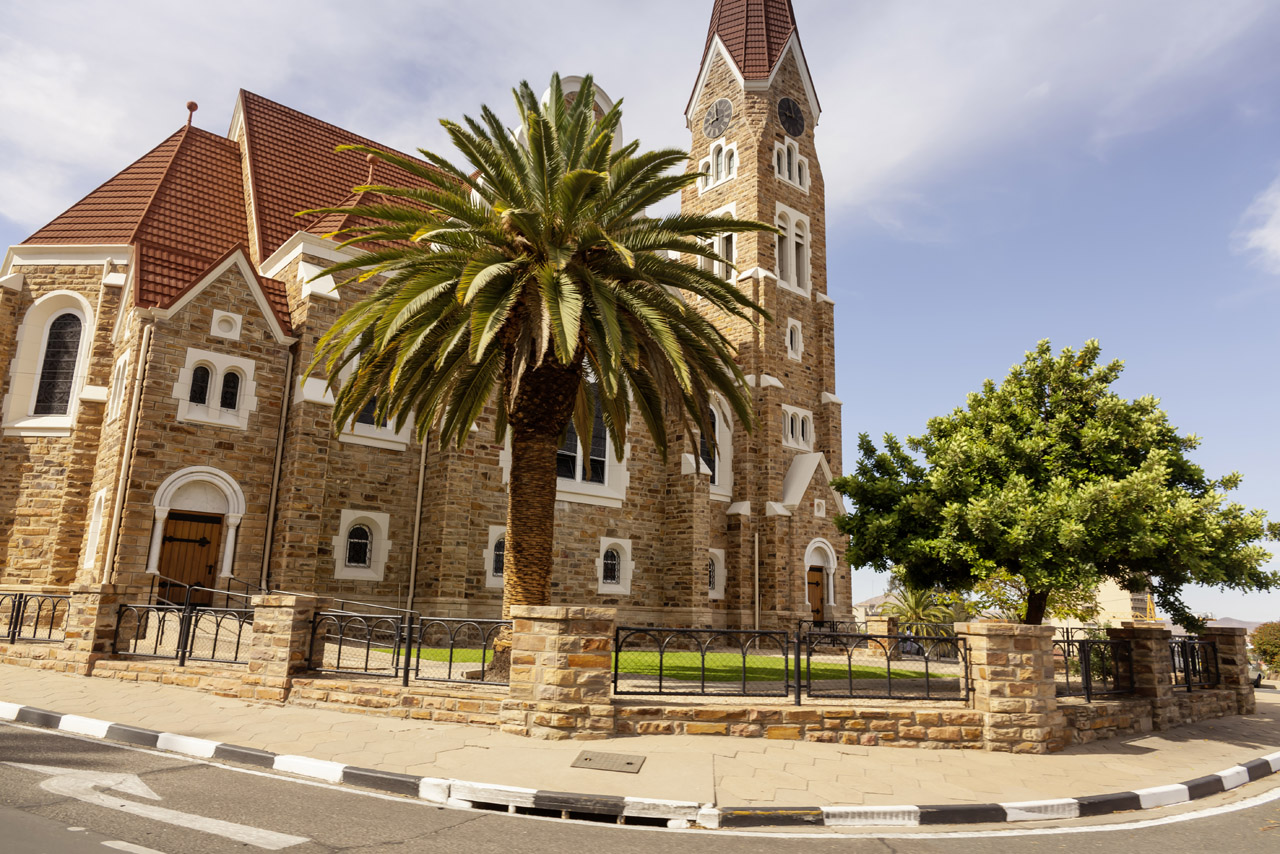
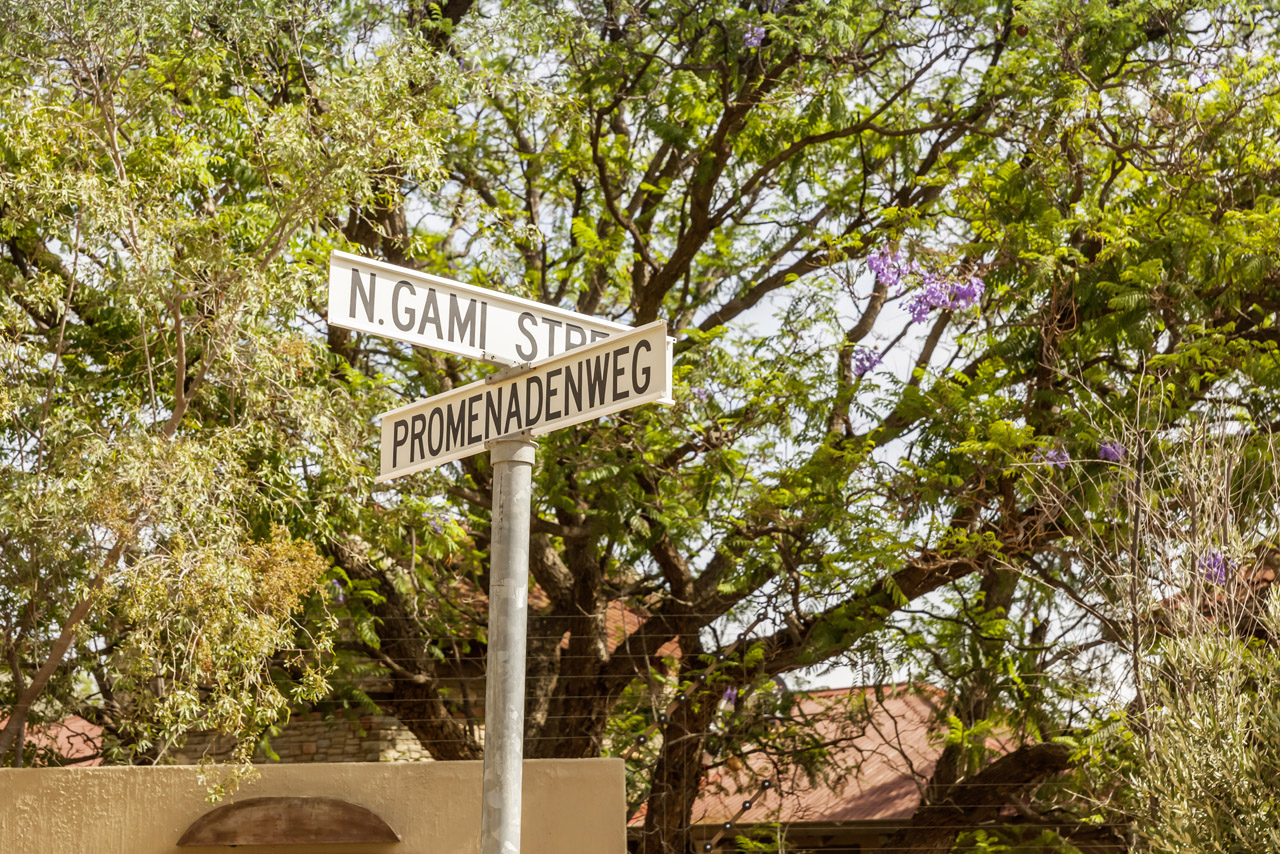
Accommodation The Olive Grove is a charming, intimate guesthouse with eleven beautifully appointed rooms, each equipped with a minibar, air conditioning/heating, safe, TV and hairdryer. Its five standard rooms are located on the lower storey; its luxury rooms with access to a terrace are on the upper storey. Those in search of the ultimate luxury experience can book the 80 m2 executive suite, which comes with its own lounge.
A breakfast buffet is included; lunch and à la carte dinner is either served in the restaurant or on the veranda. The Olive Grove takes great pride in its cuisine and is certain to delight even the most discerning of palates.
A swimming pool provides the perfect place for a cooling dip.
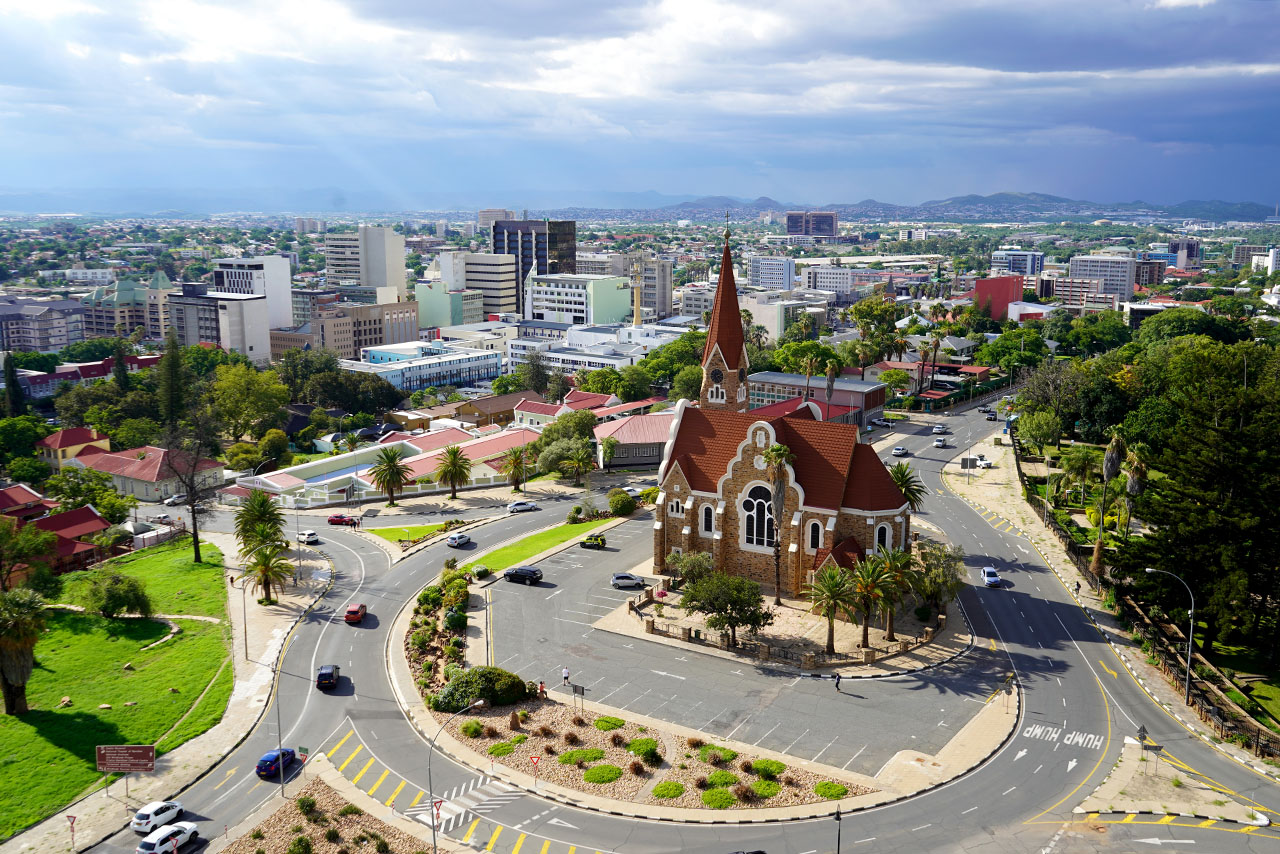
Windhoek is situated in a hilly environment, in the Khomas Highland region, about 1600 m above sea level. The international airport is approx. 1 hours’ drive east, as the city itself has no suitable place for a major airport. It is also served by a small airport (Eros), which is used by lighter aircraft.
The city doesn’t offer enough to warrant remaining for days, but it is the perfect place to spend a night at the beginning or end of a tour, and it is well worth having a look around. Windhoek’s size and straightforward layout means it’s easy for self-drivers to find their way around, and therefore the perfect place to stock up on provisions.
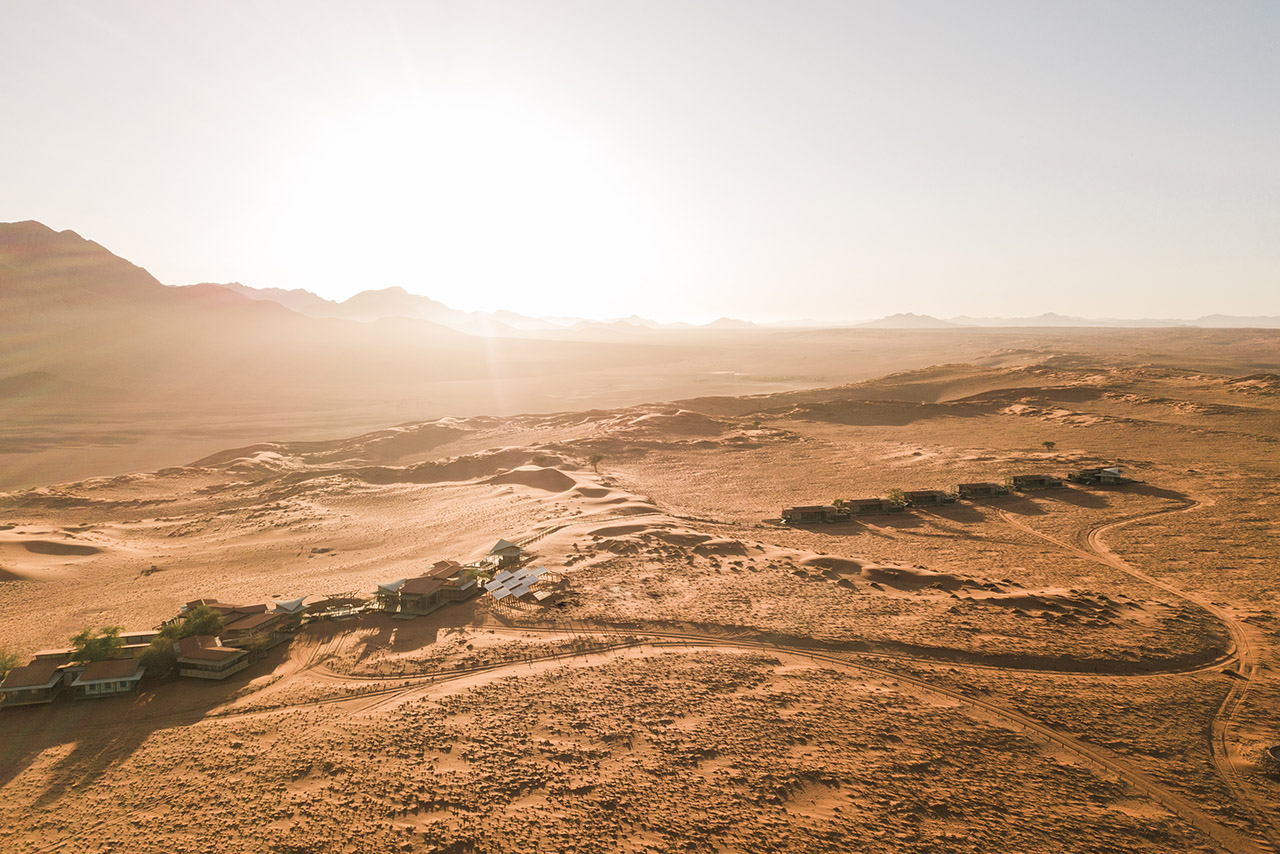
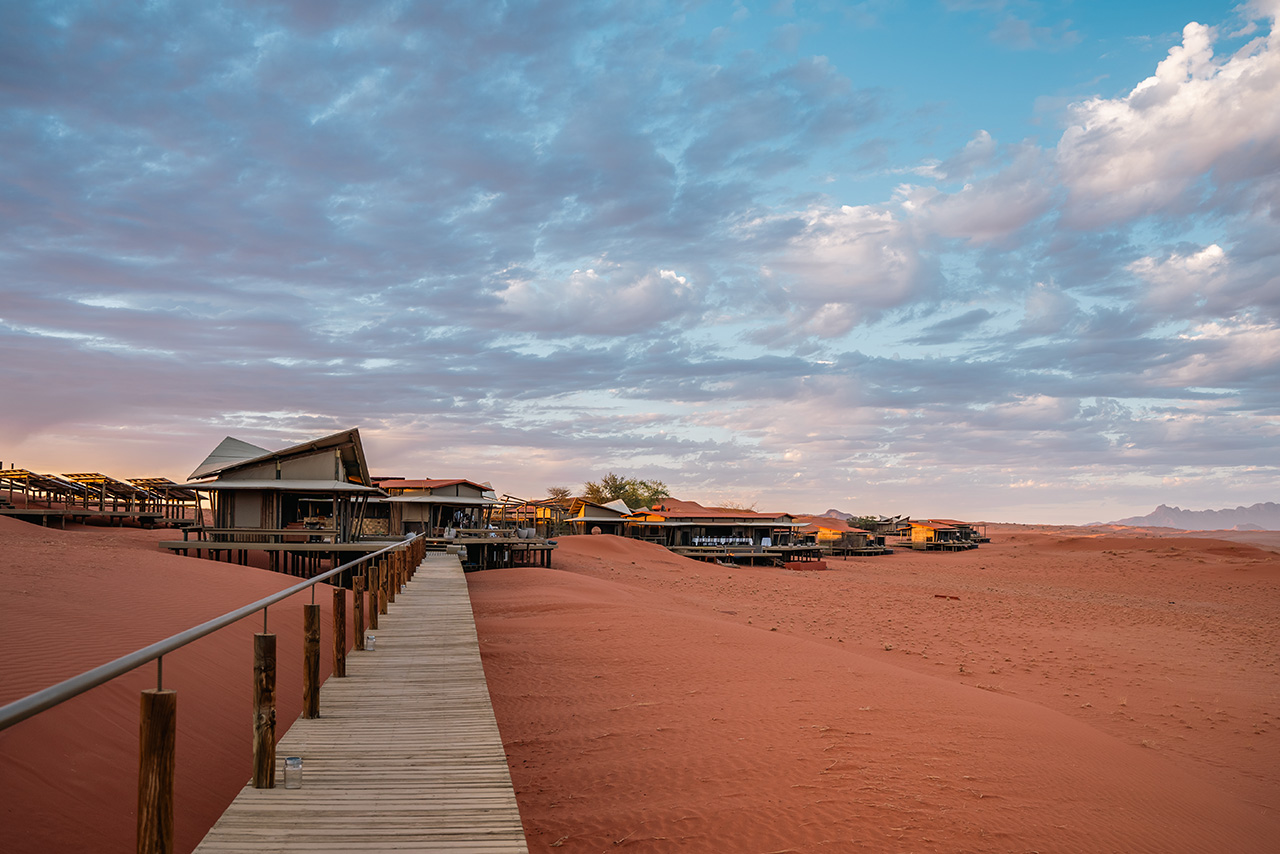
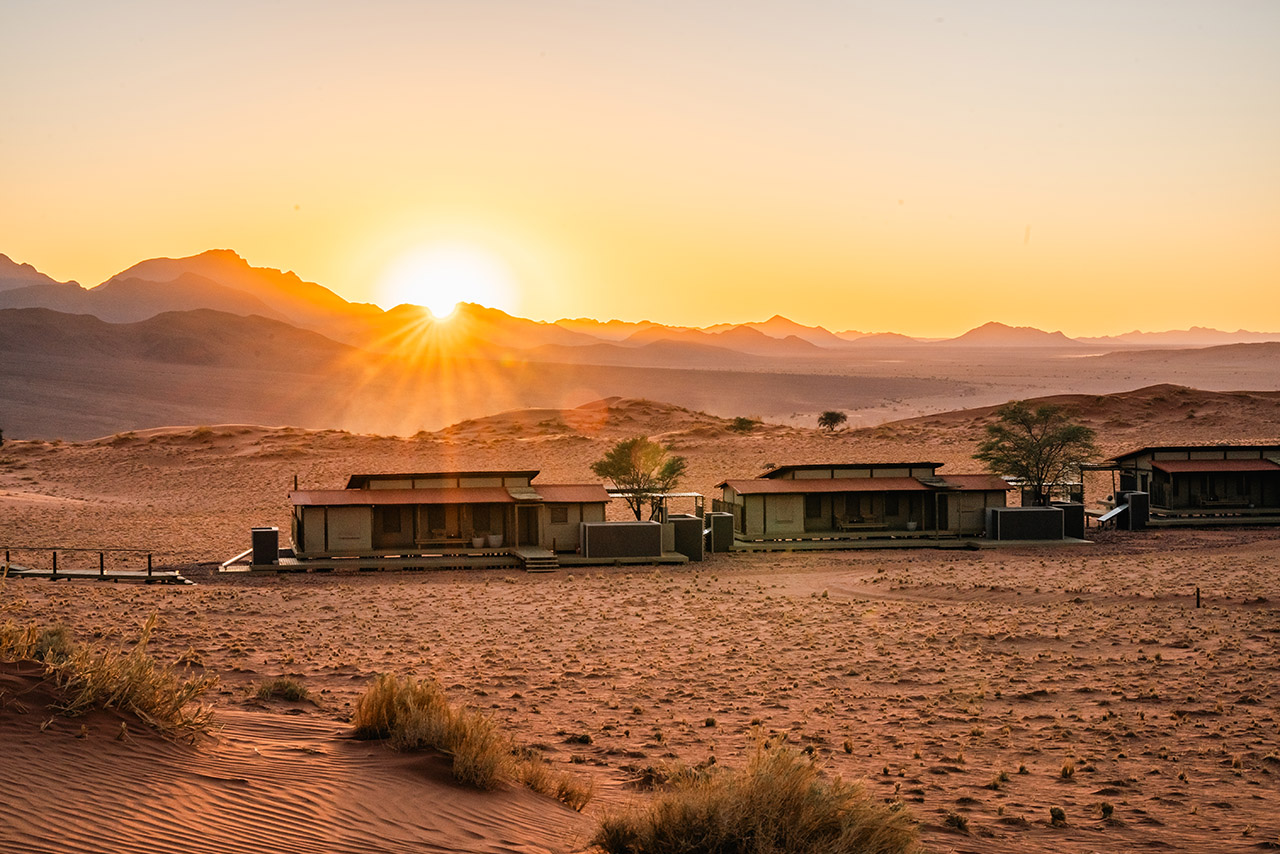
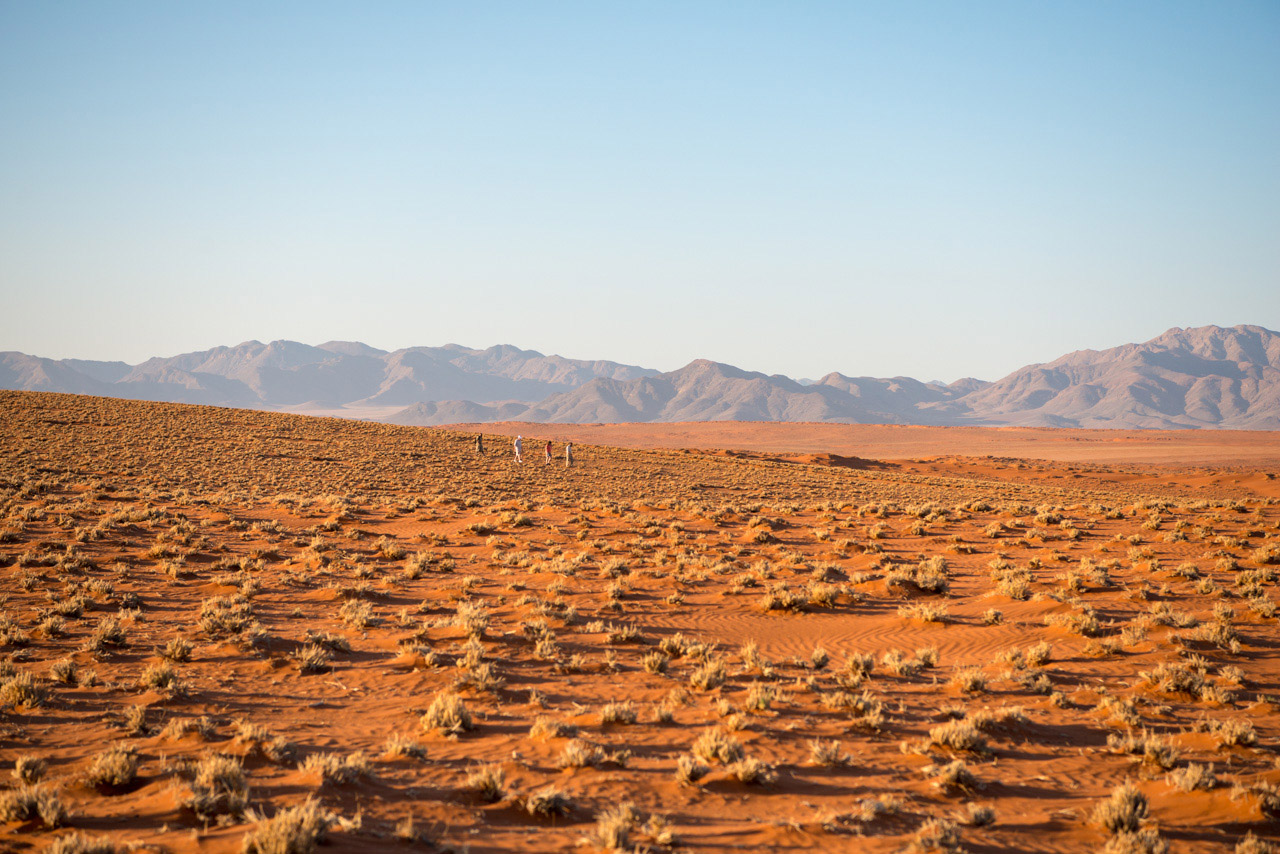
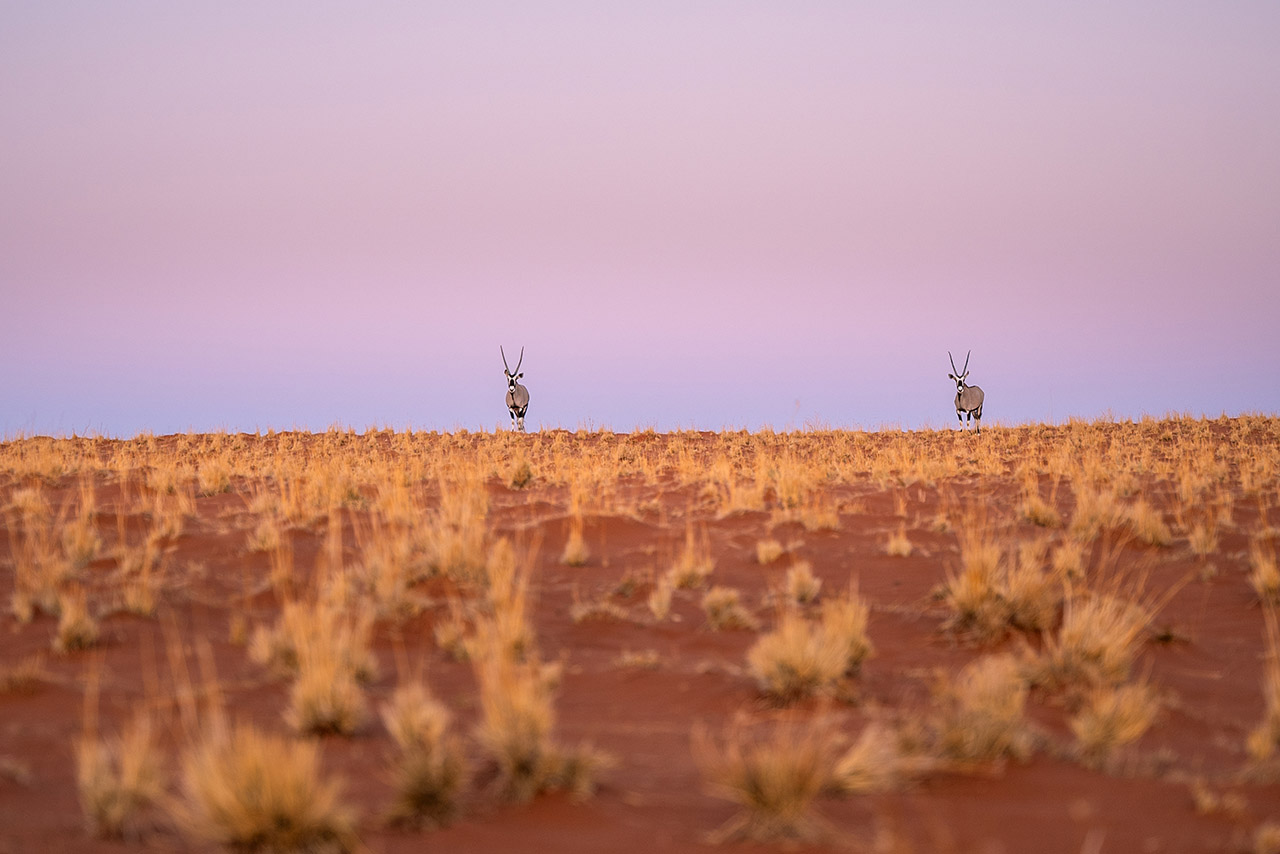
Accommodation Wolwedans Desert Lodge (ex Dunes Lodge) is situated on a plateau offering spectacular panoramic views in all directions. Each of the ten spacious chalets is equipped with en-suite facilities and a large private veranda, where guests can enjoy the fantastic vistas over the NamibRand Nature Reserve. The tent walls can be rolled up to give an exhilarating feeling of being truly amidst nature.
The main building comprises two lounges, a fire pit, library, wine cellar and two dining rooms joined by a platform, where guests can marvel at the flora and fauna over a relaxing drink. A pool with loungers offers the perfect opportunity to cool down.
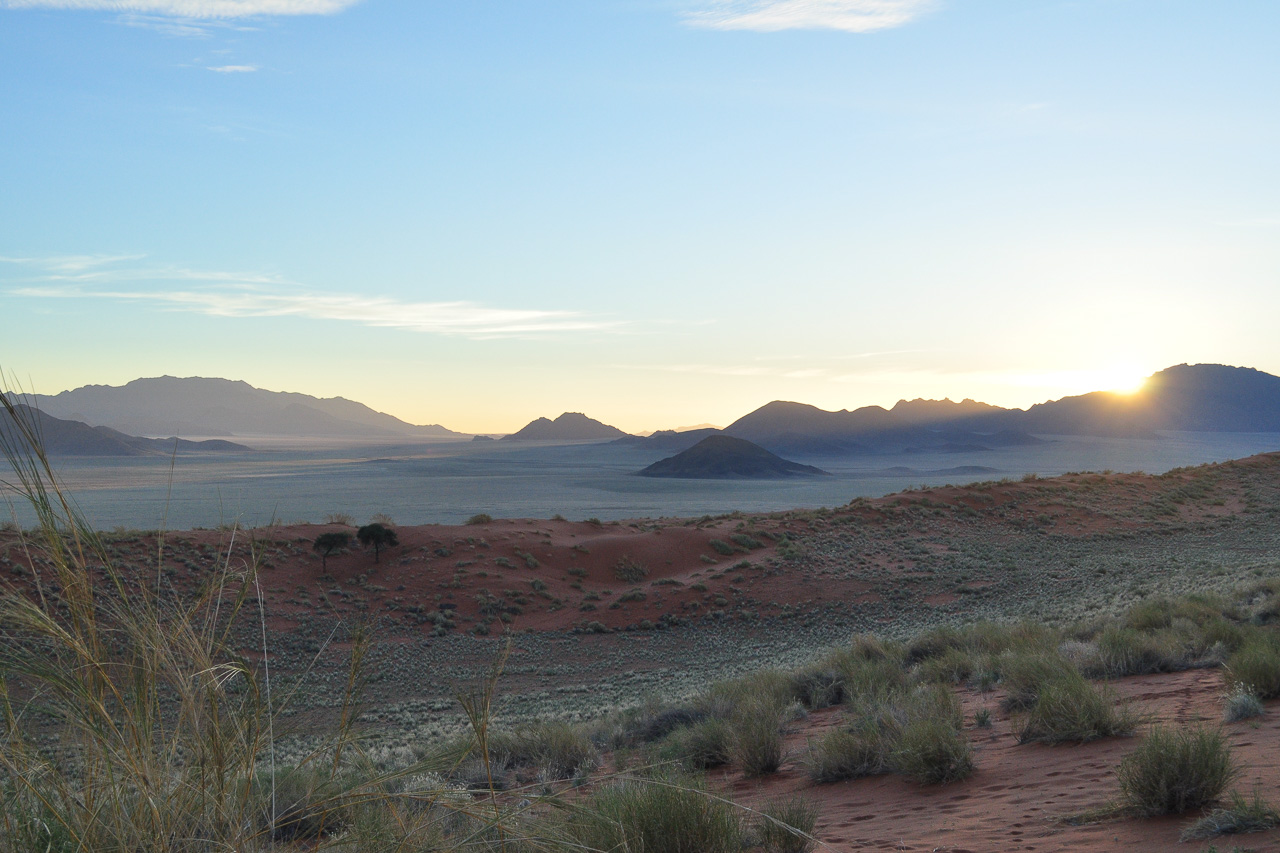
Established in 1984 by the Brückner family, the reserve currently encompasses more than 200’000 hectares of land. The NamibRand is situated some 2 hours by car south of Sesriem and abuts the Namib Naukluft Park to the west and the Nubib Mountains to the east. Its diverse landscape includes red sand dunes, vast meadows, mountains and valleys supporting several species of animal, including zebra, oryx, springbok, kudu, giraffe and cheetah.
The west of the reserve is dominated by the bush-covered dune fields of the Namib, and the east by granite cliffs and the Nubib Mountains. It is different from the Sossusvlei and its high sand dunes, so combining the two areas offers visitors a truly comprehensive insight into the Namib region.
All Namib Rand lodges offer scenic drives and the guides are more than happy to explaind the flora and fauna of the Namib to their guests. The guides will also encourage guests to leave the vehicle and explore the Namib on foot as well. As there are only few camps in the area, excursions in the NamibRand Nature Reserve are always very private and exclusive.

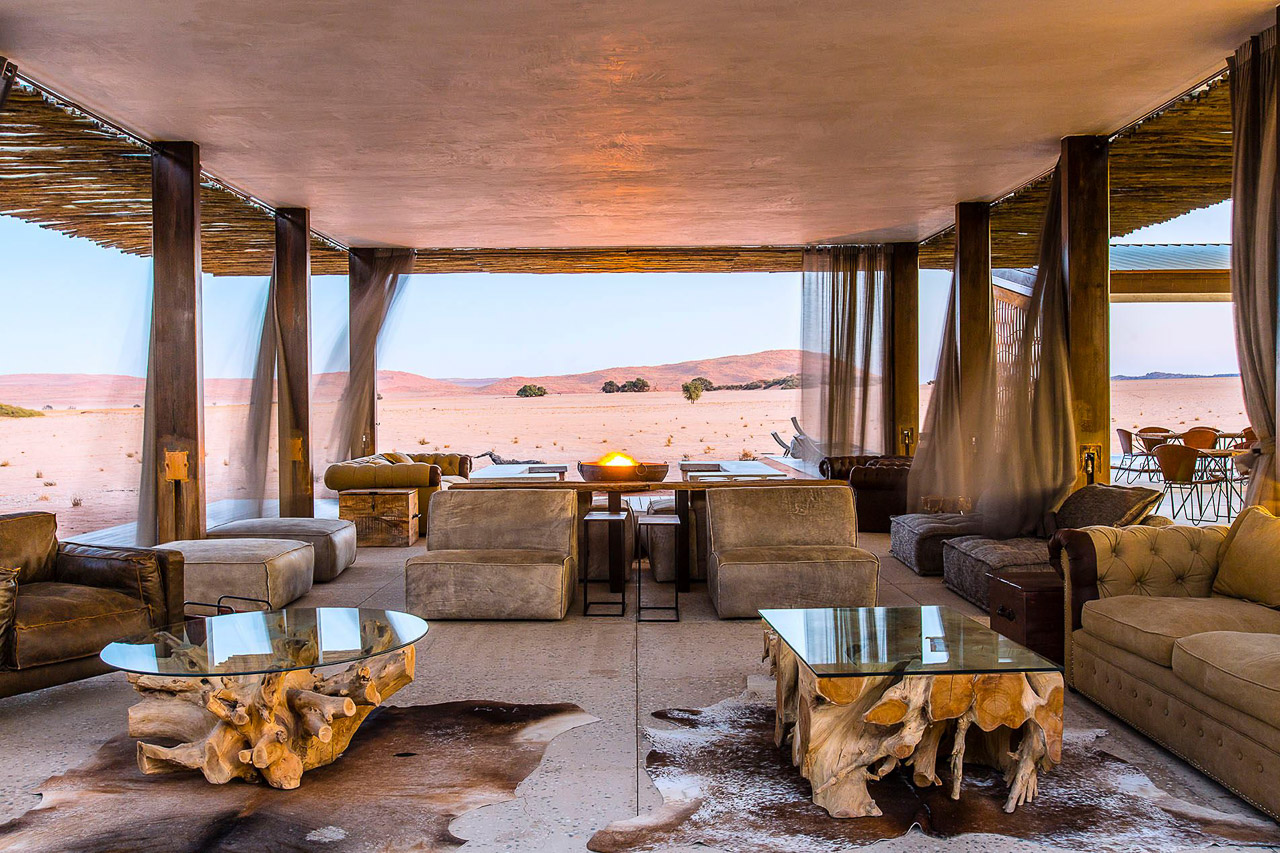
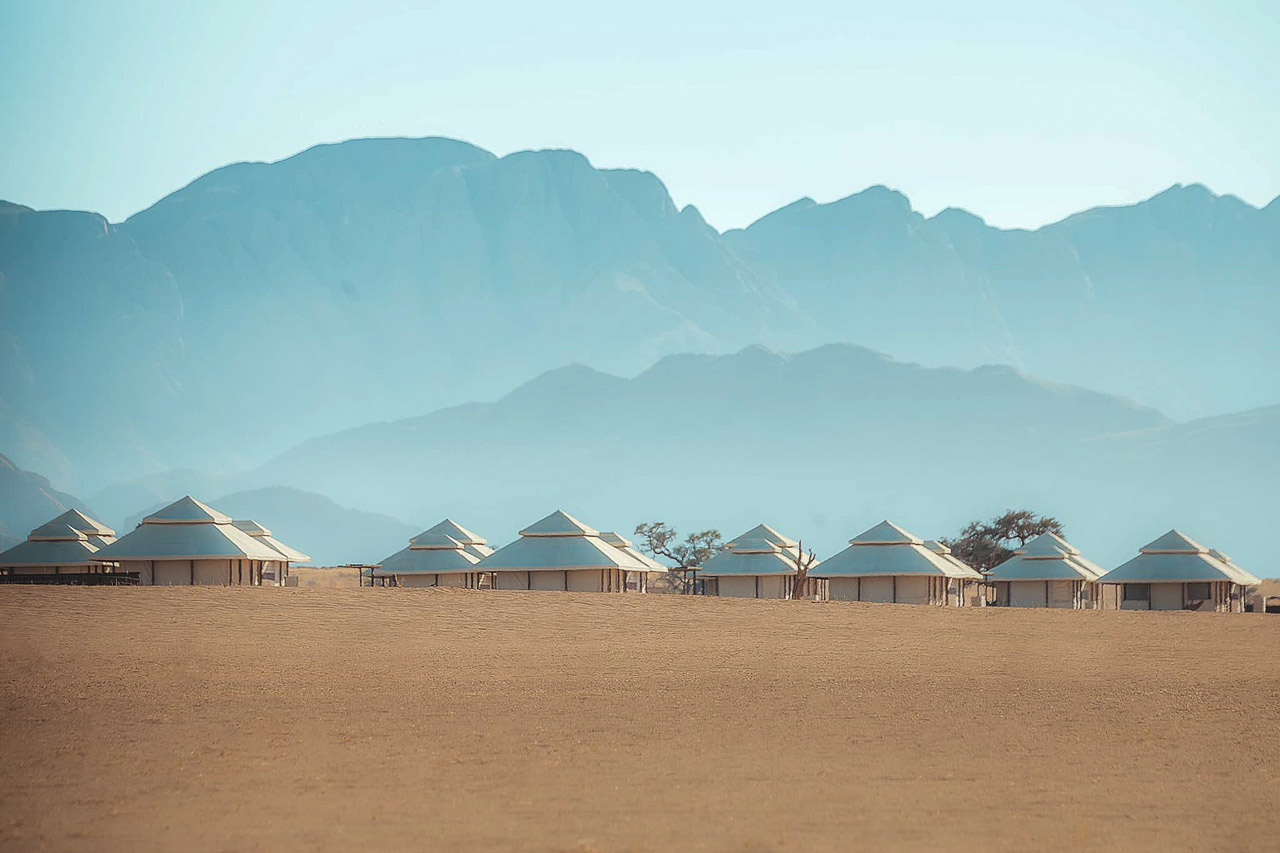
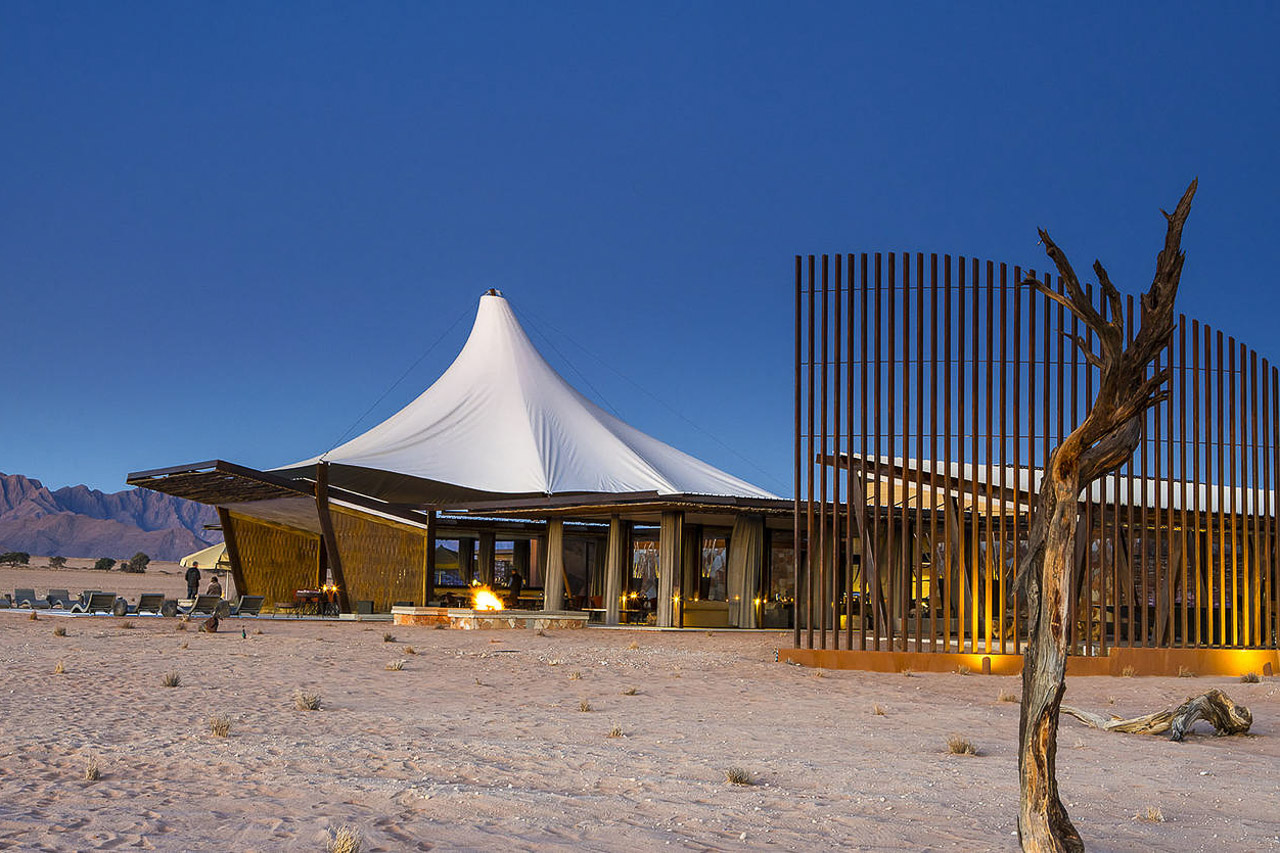
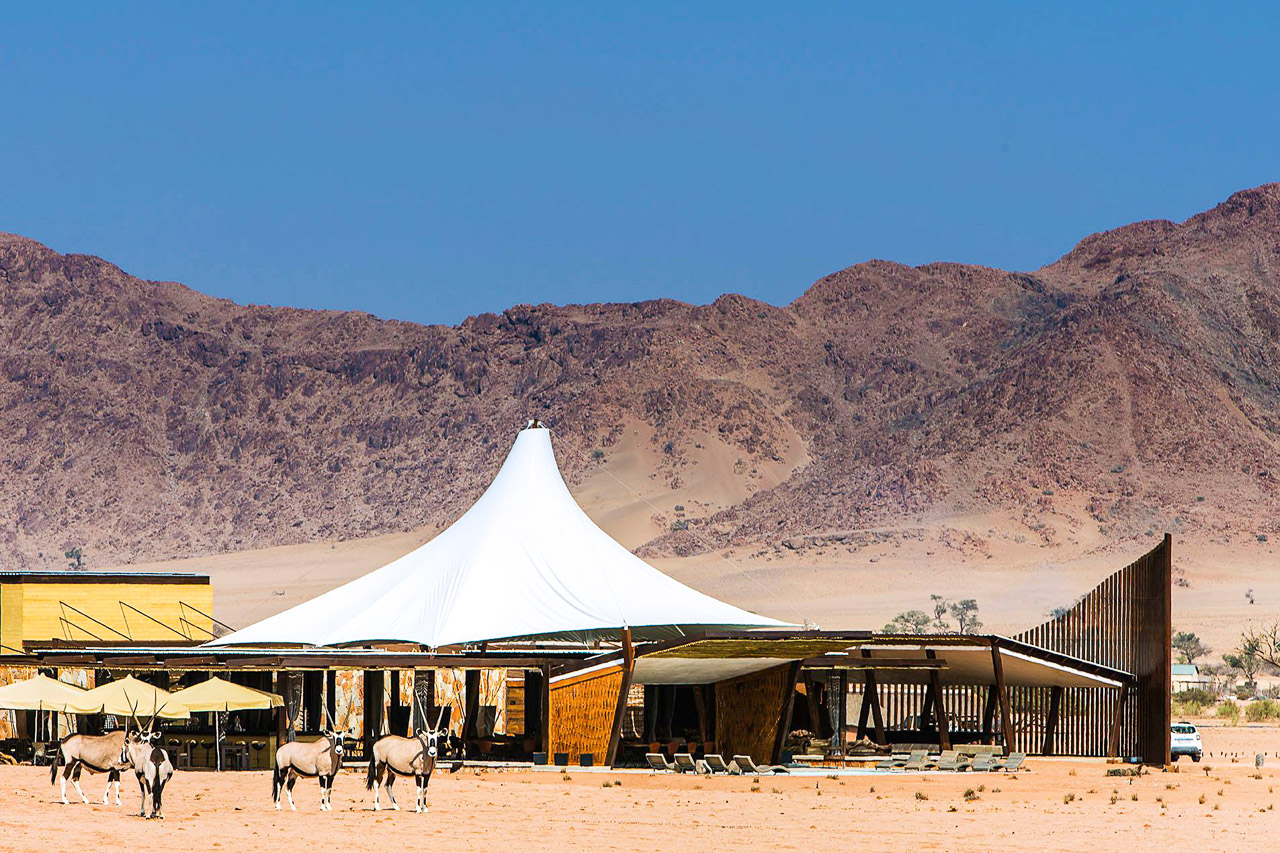
Accommodation
Dead Valley Lodge is one of only two lodgings located within the Namib Naukluft Park, making it a good option for those who want to explore the dunes themselves. The last 5km of road to Sossusvlei is just a sandy track and can be challenging.
The lodge offers twenty free standing, climate-controlled, luxury tented chalets with panoramic views of the Namib Desert and its towering red sand dunes and rugged mountain ranges. The bathroom is located in a separate chalet on the same platform and has a large shower, toilet and a double washbasin.
The main area has a an open-plan design with natural materials such as wood, stone and canvas that blend in very nicely with the desert environment. There is a large lounge area, an open fireplace, a swimming pool, bar and a restaurant that serves Namibian cuisine.
Since the lodge is located inside the park, visitors are not bound to the opening and closing times of the park gate and have more flexibility in terms of visiting Sossusvlei. Guests of Dead Valley Lodge may reach Dead Vlei even before sunrise.
Sossusvlei is the area most associated with Namibia: Red dunes as far as the eye can see (up to 380 m high, coloured red by the clay-rich sand) and dead trees in the Vleis or pans decaying slowly at the will of the arid climate. The Vleis were created by the Tsauchab River, which probably once flowed to the Atlantic some 50 km away. The whole Sossusvlei region is quenched with water during those very rare years when a good amount of rain falls, prompting bushes and flowers to spring up everywhere.
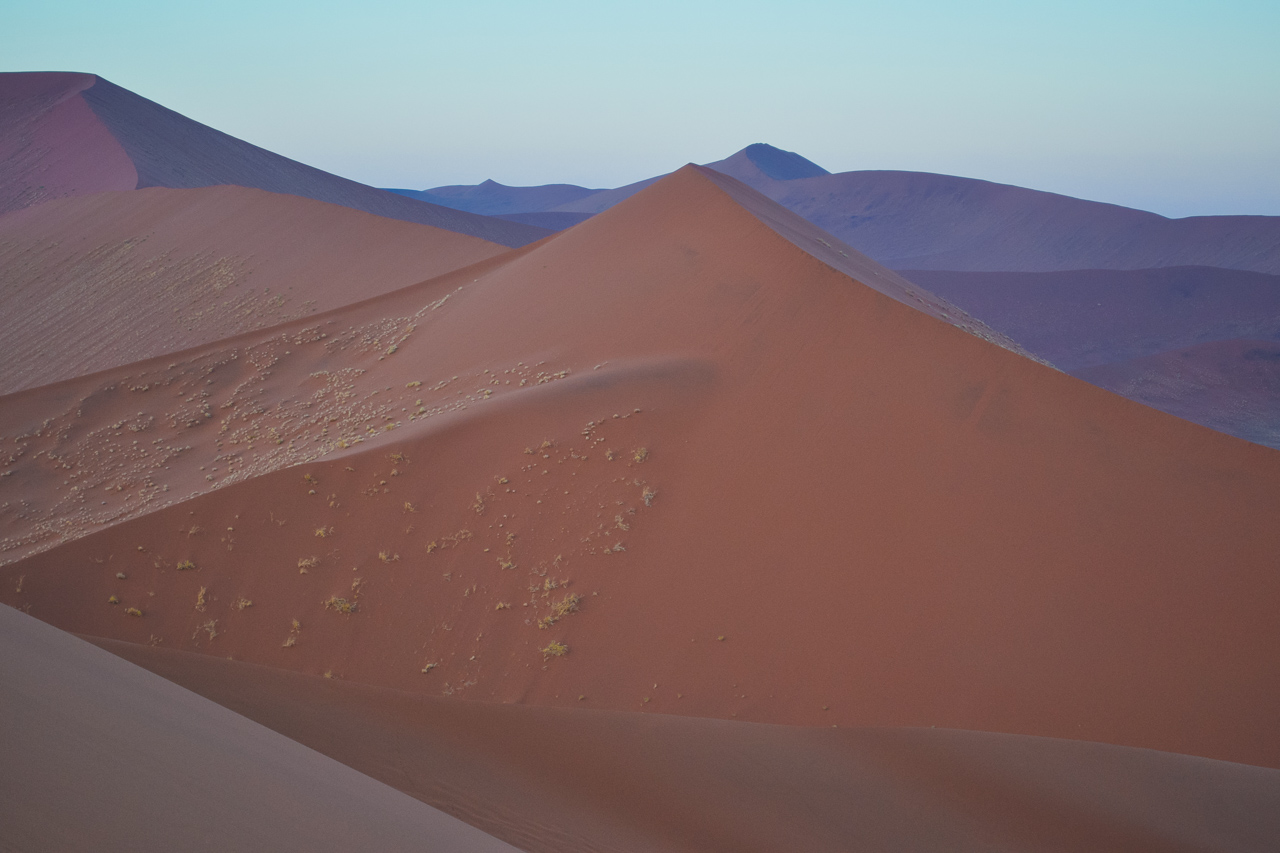
Sossusvlei is also the place most commonly associated with Namibia. Its red dunes stretch as far as the eye can see (up to 380 m high, coloured red by the clay-rich sand) and the desiccated trees in the vleis (salt and clay pans), which decay slowly due to the arid environment, are typical of the region. The vleis were created by the Tsauchab River, which most probably flowed into the Atlantic 50 km away. Very rarely, a torrential downpour will see the vleis disappear under water – a spectacle that very few get to see. .
The Namib itself is a product of the Orange River in the south, which carries the red sand of the Kalahari to the ocean. The Benguela Current takes the sand north, where the prevailing winds have blown it back inland over millions of years, forming the Namib Desert.
Sossusvlei is situated in the Namib Naukluft Park and thus subject to very strict regulations. The park opens its gates at sunrise and all visitors are required to leave again by sunset. The distance between the park entrance and the Sossusvlei car park, however, is a good 60 km, most of which is tarred. From here it’s only possible to reach the second car park, right next to the Sossusvlei, in a 4x4, on foot or using the shuttle service. There are also other vleis in the area in addition to the Sossusvlei, including Dead Vlei, with its famous dead trees, and somewhat further away, the so-called Hidden Vlei, which requires a good trek to get to.
The most famous dunes are Dune 45 (170 m high), which is located 45 km from the entrance to Sossusvlei, and then Big Daddy, the largest dune, and his partner, Big Mama. Visitors are of course allowed to scale the dunes, and the effort is worth it. The way up is quite strenuous – but this also means that the way down is easy!
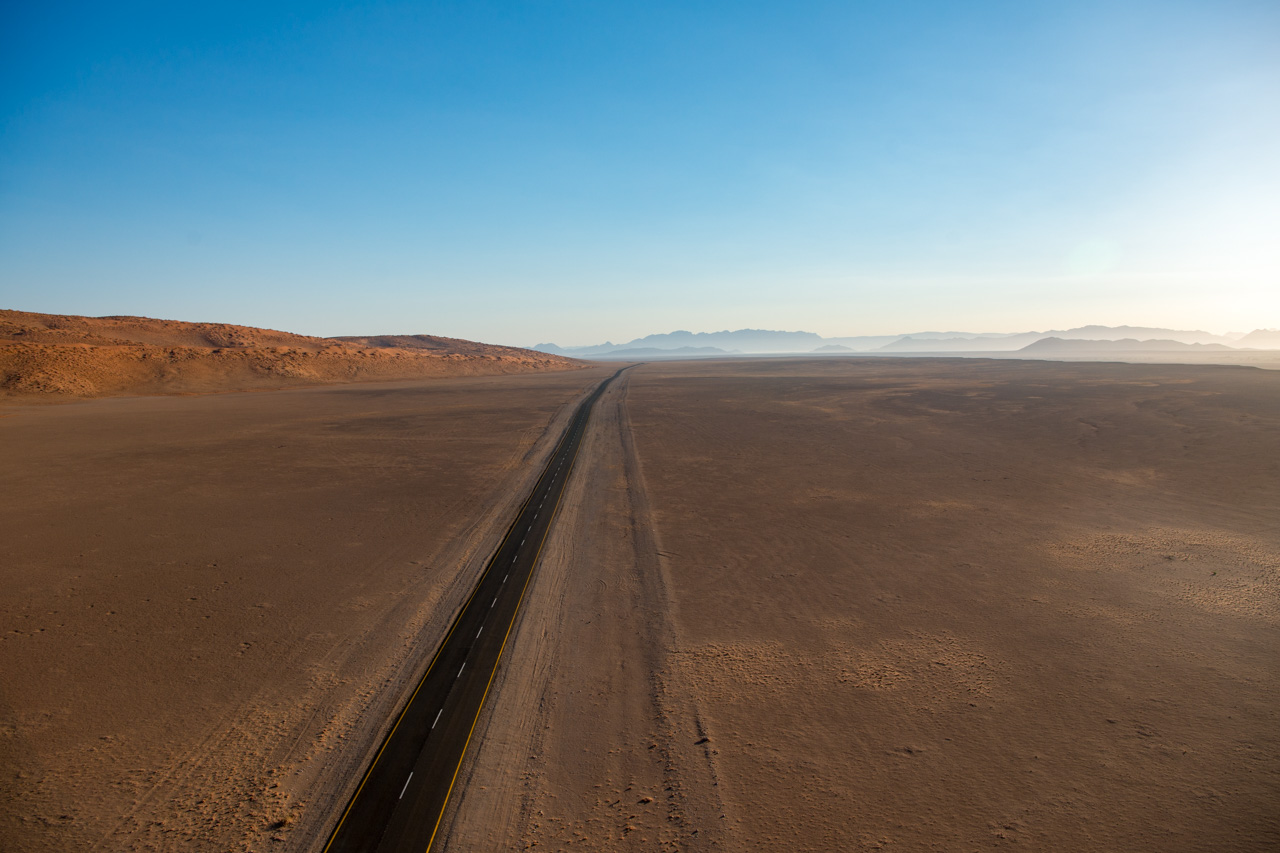
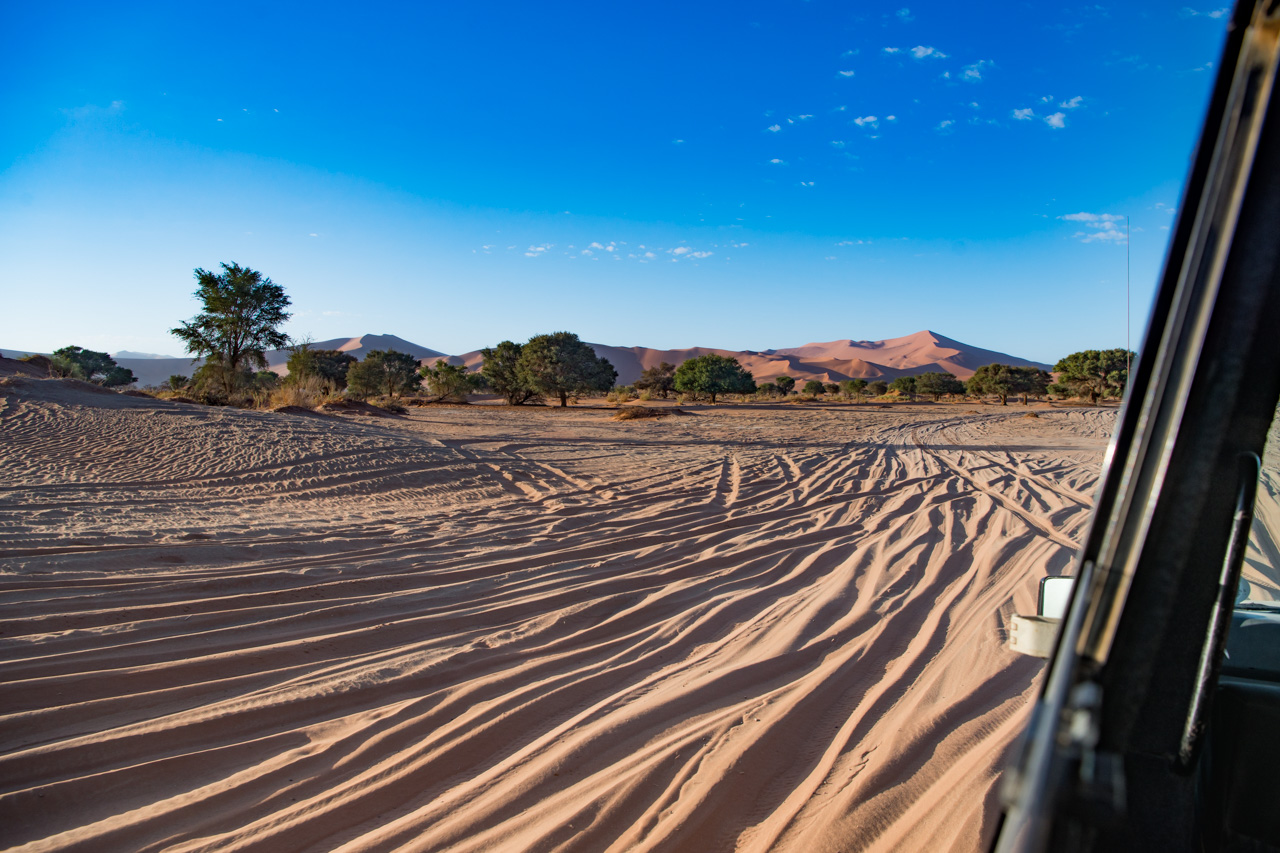
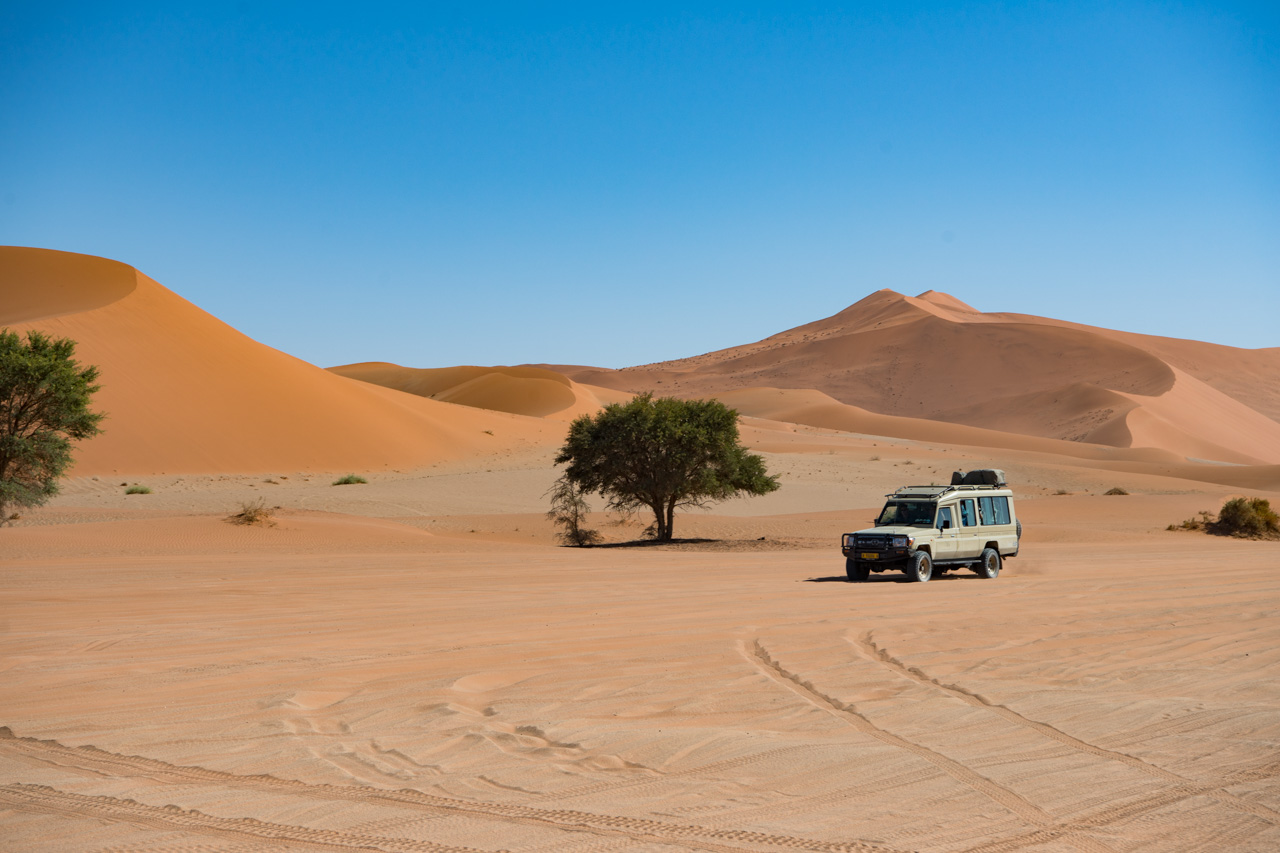

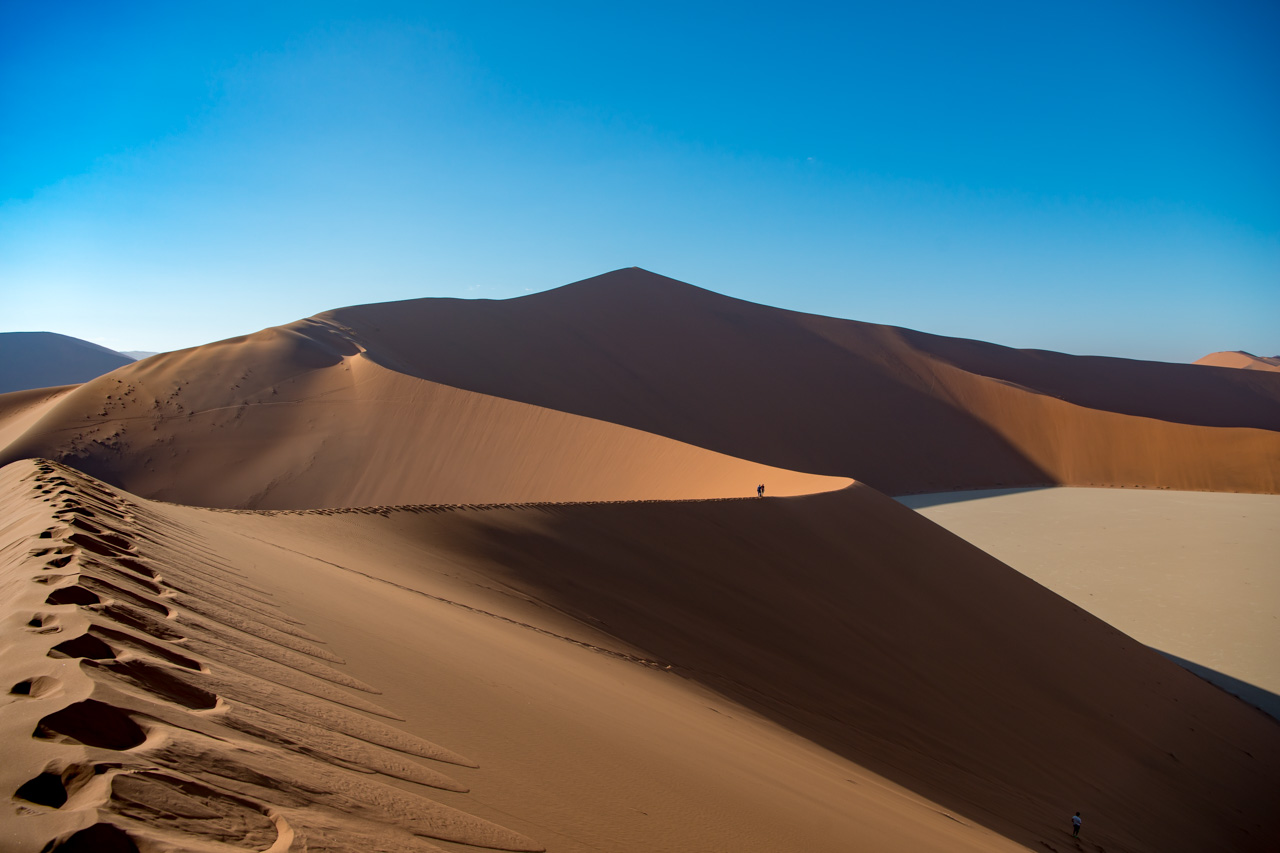
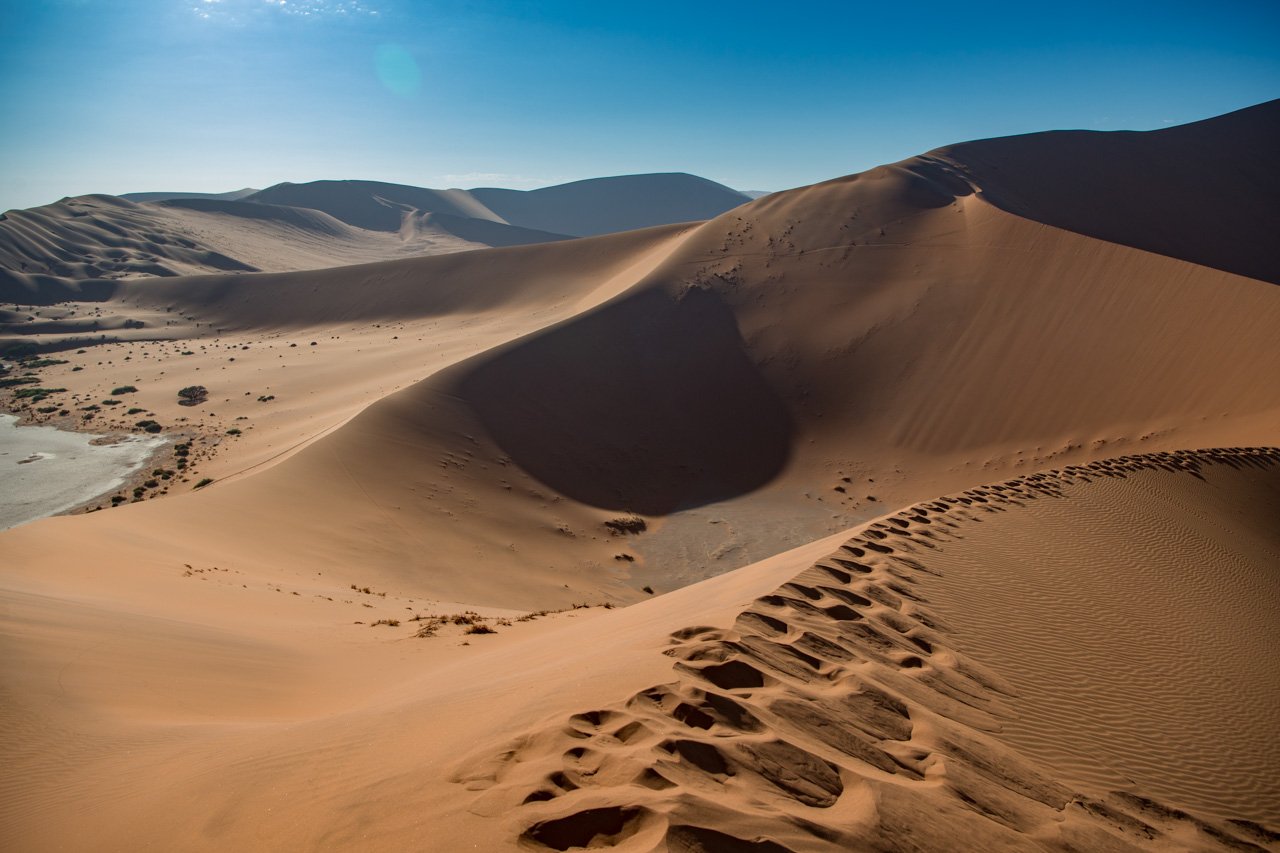
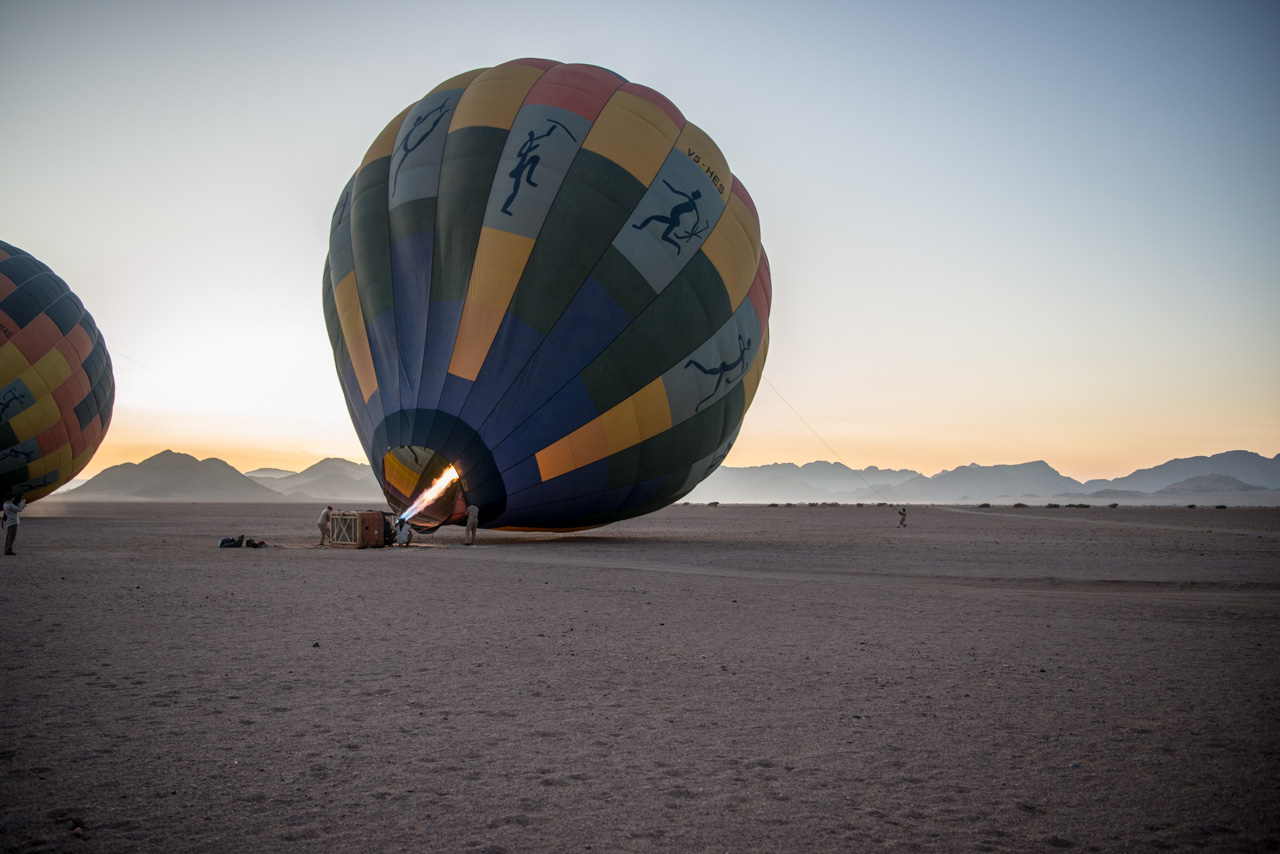

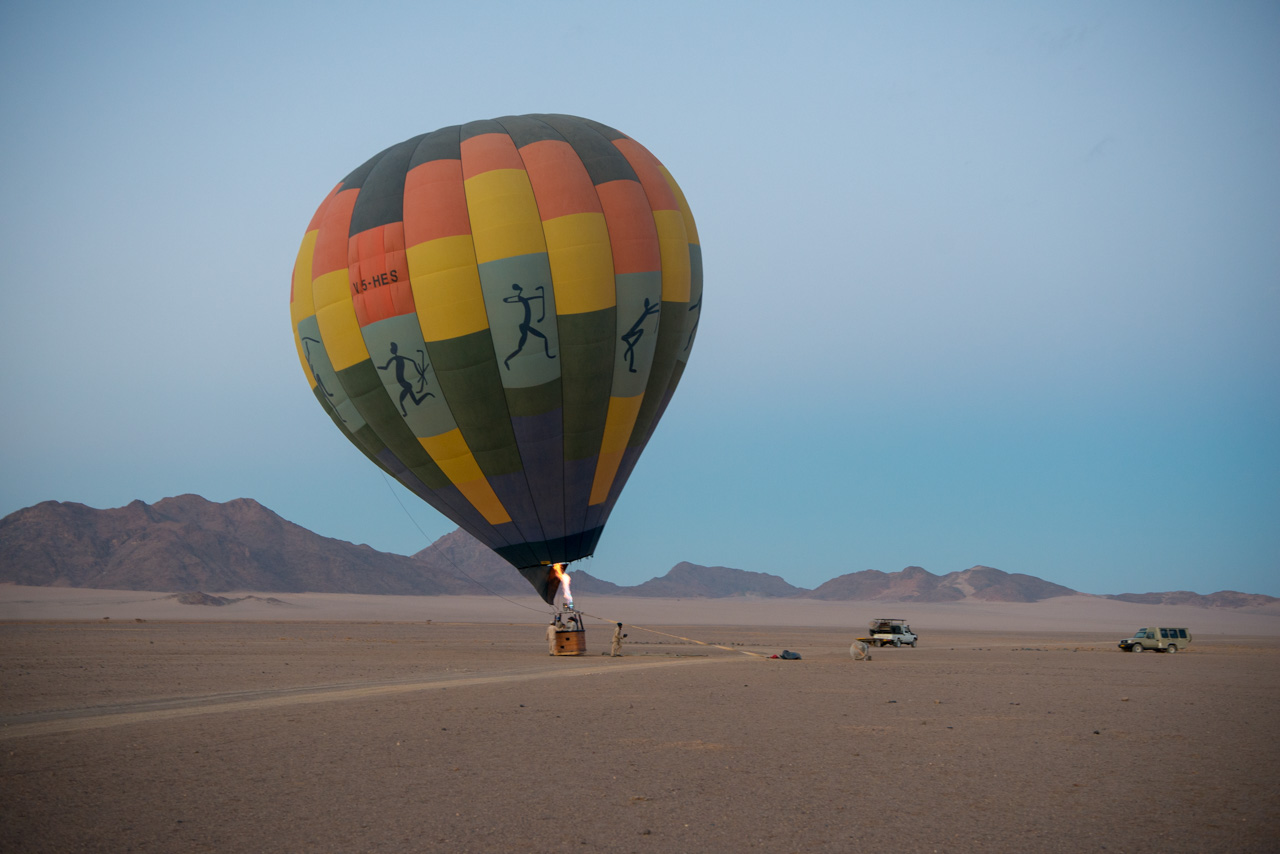
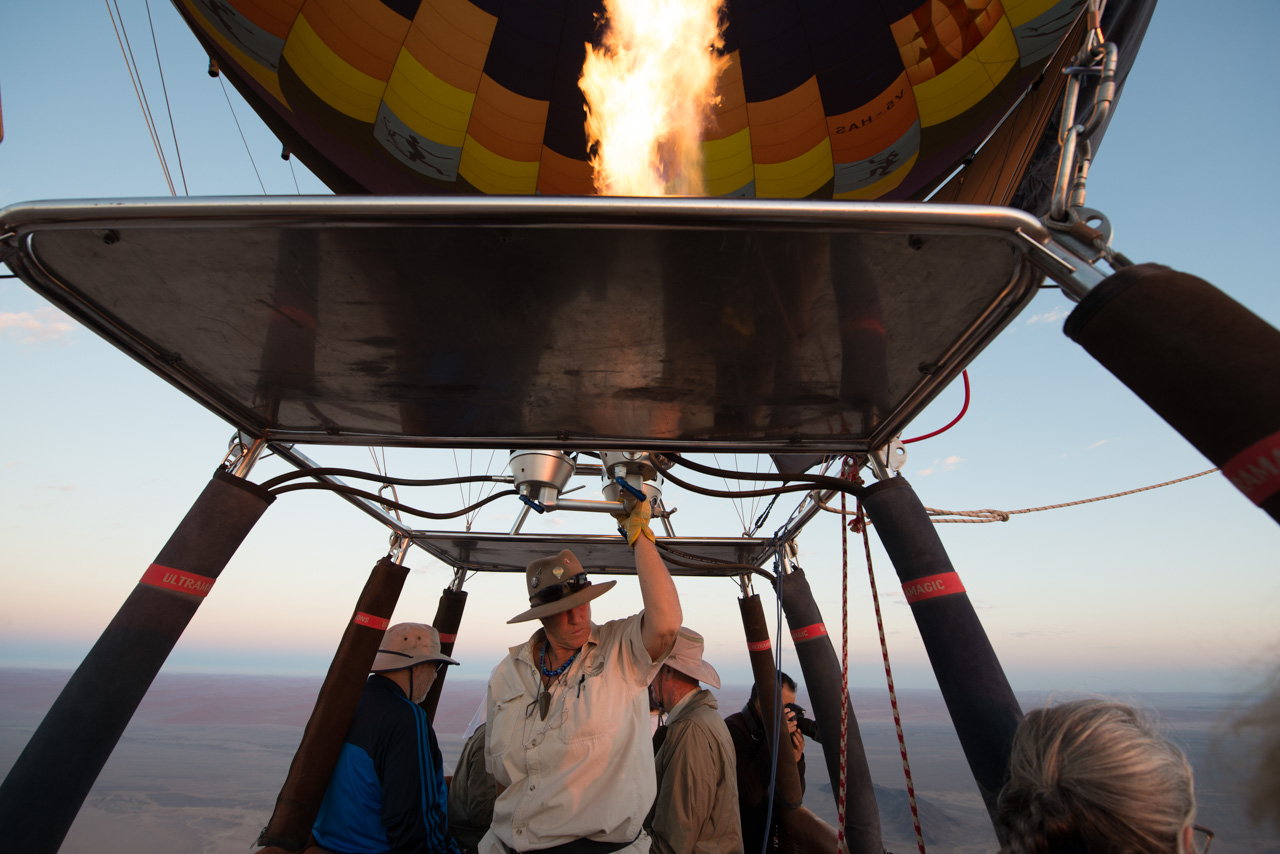
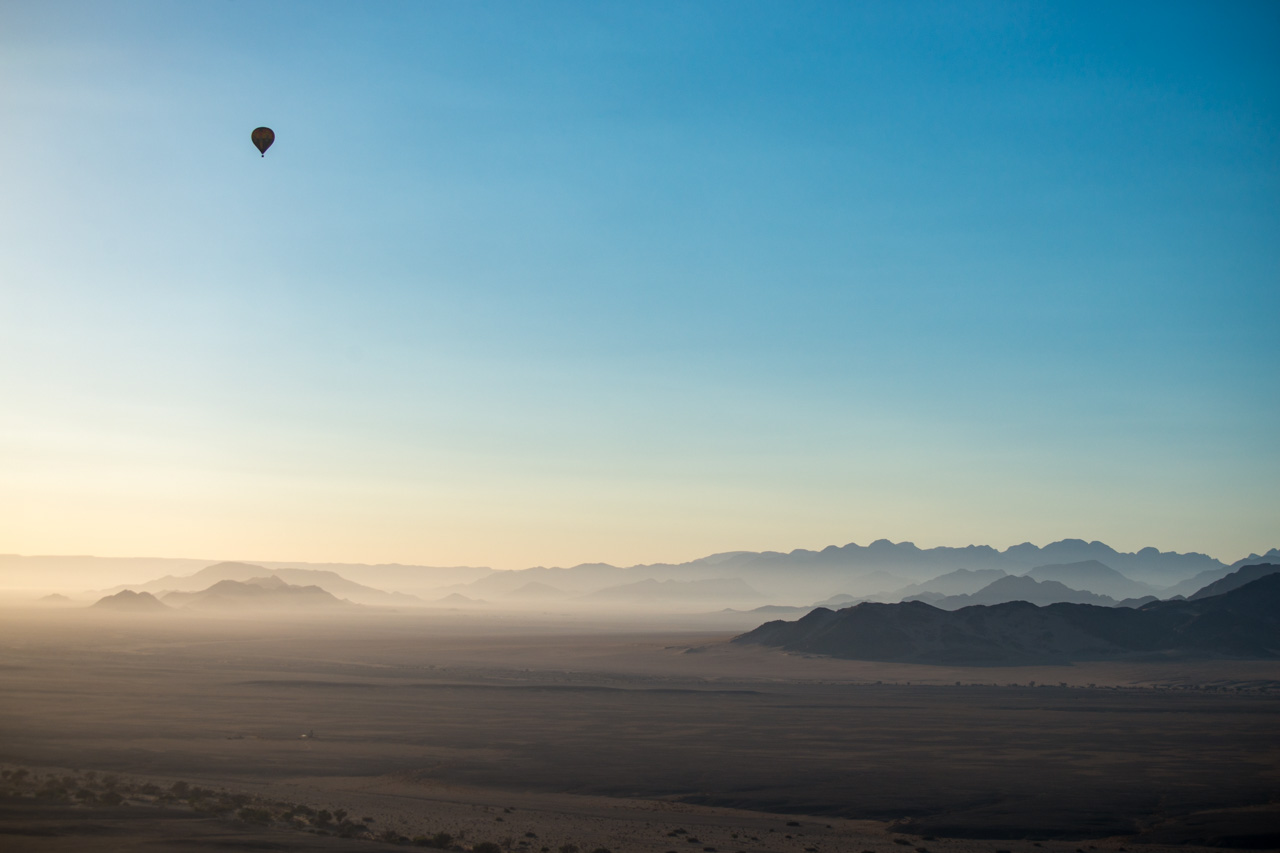
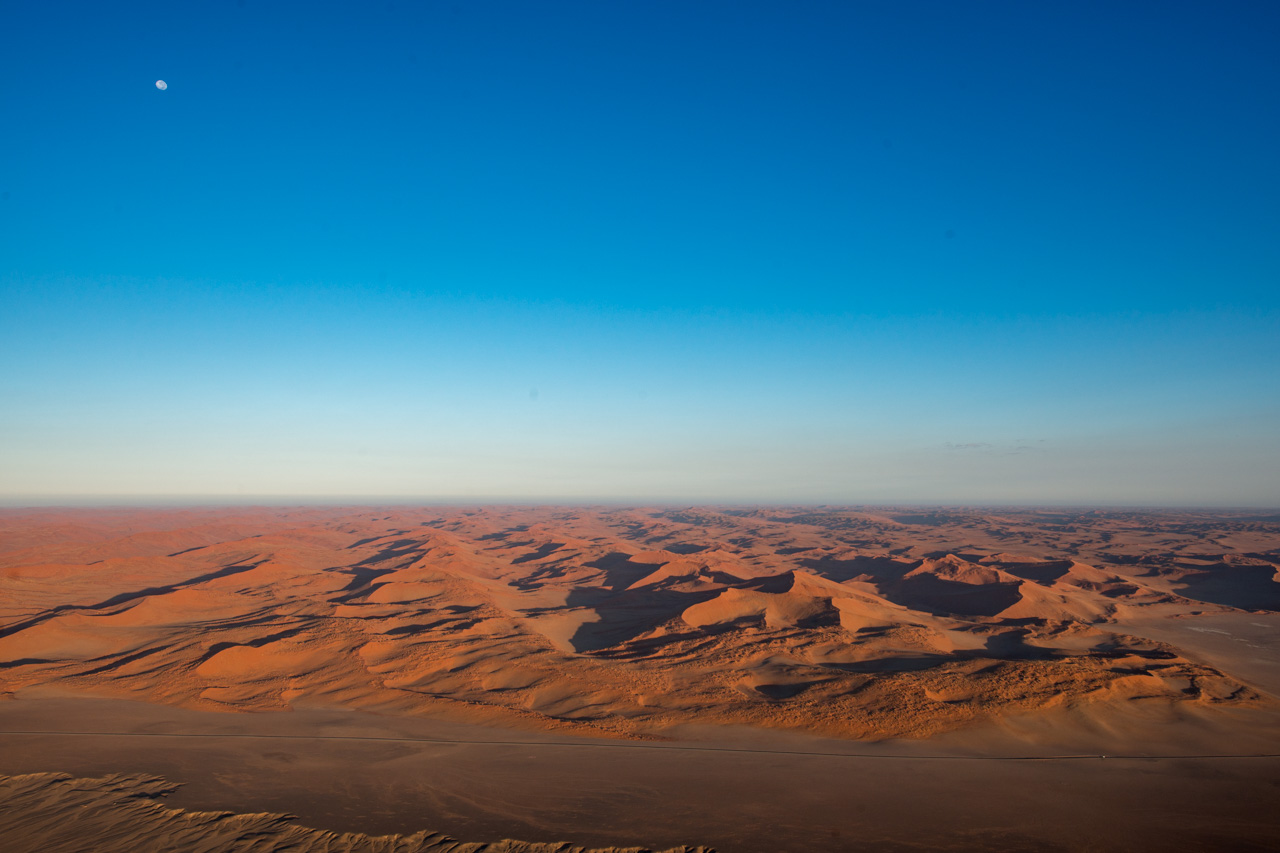
On landing (wherever the wind has taken you) there is a champagne breakfast waiting for you.

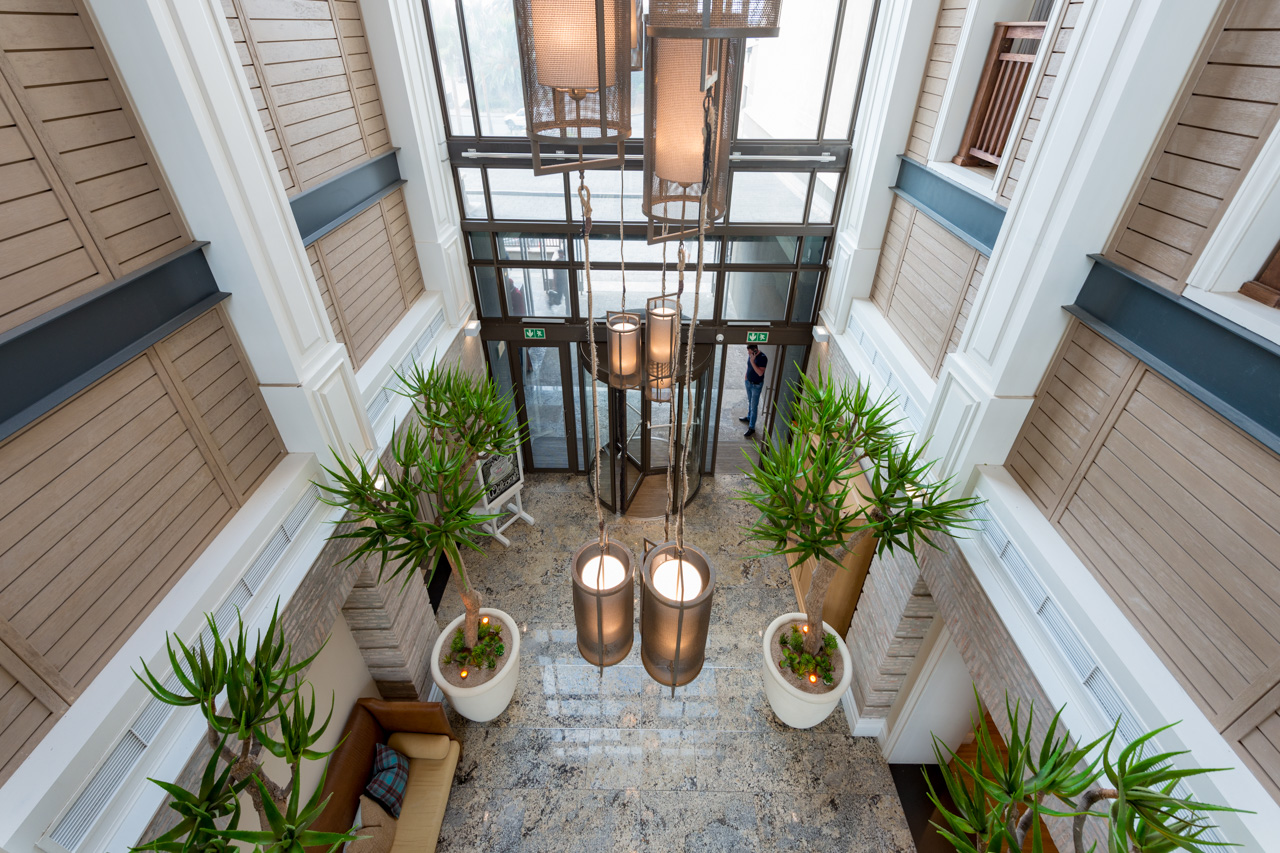
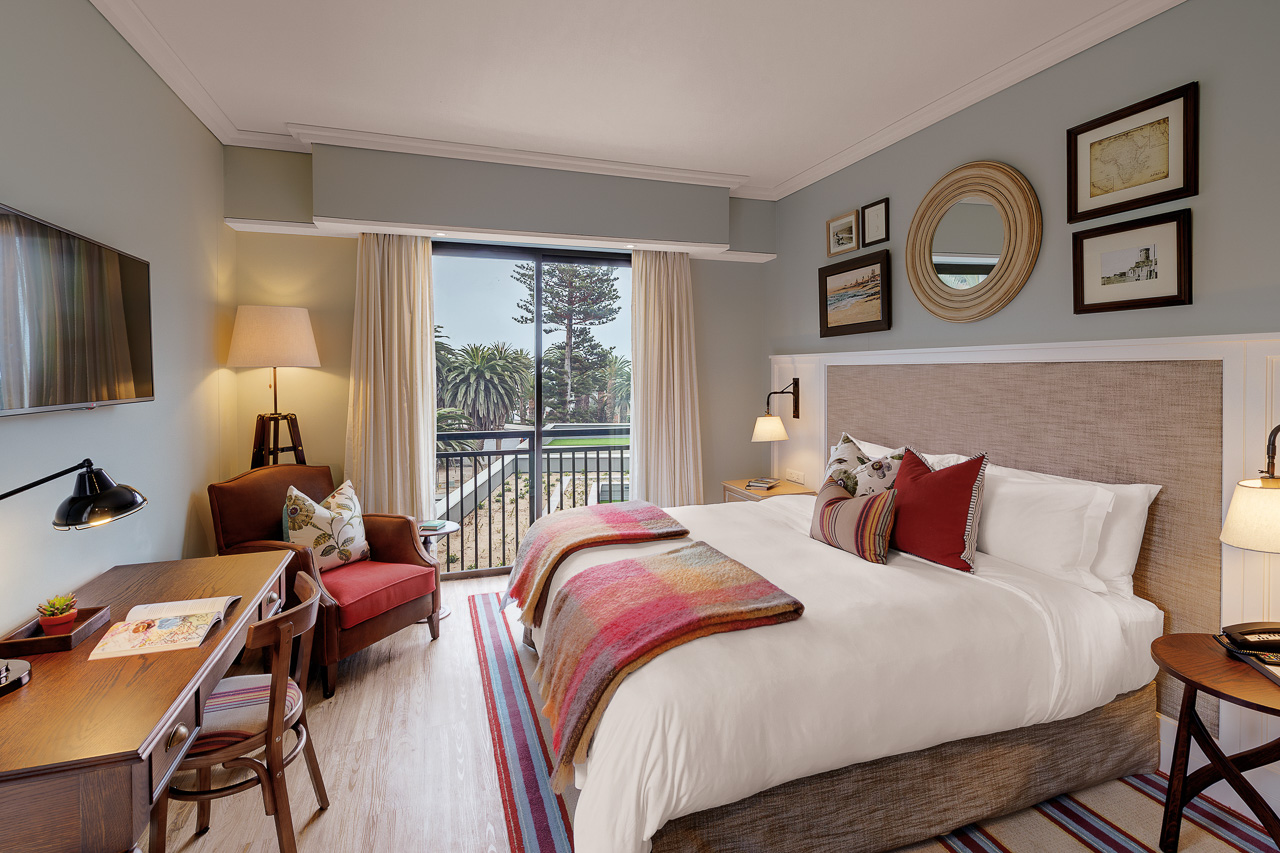
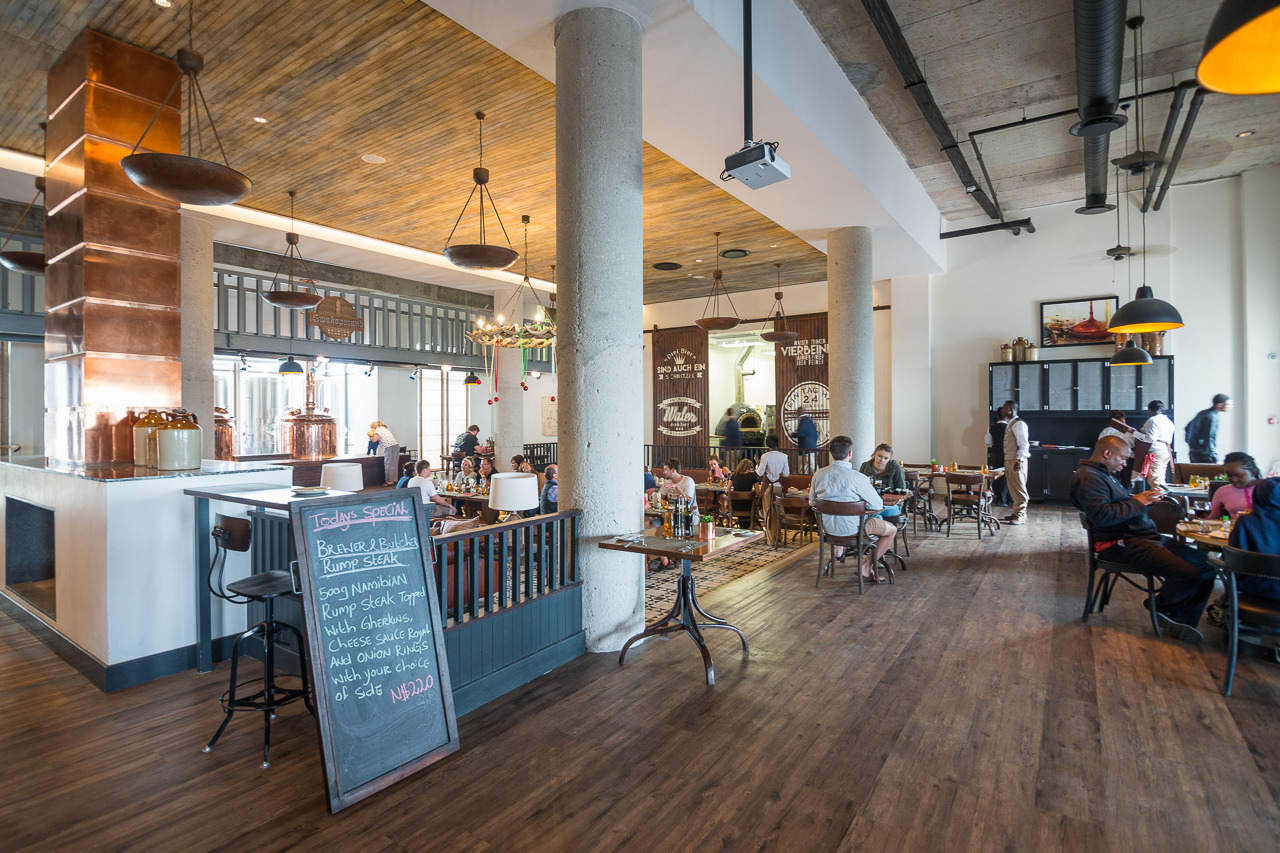
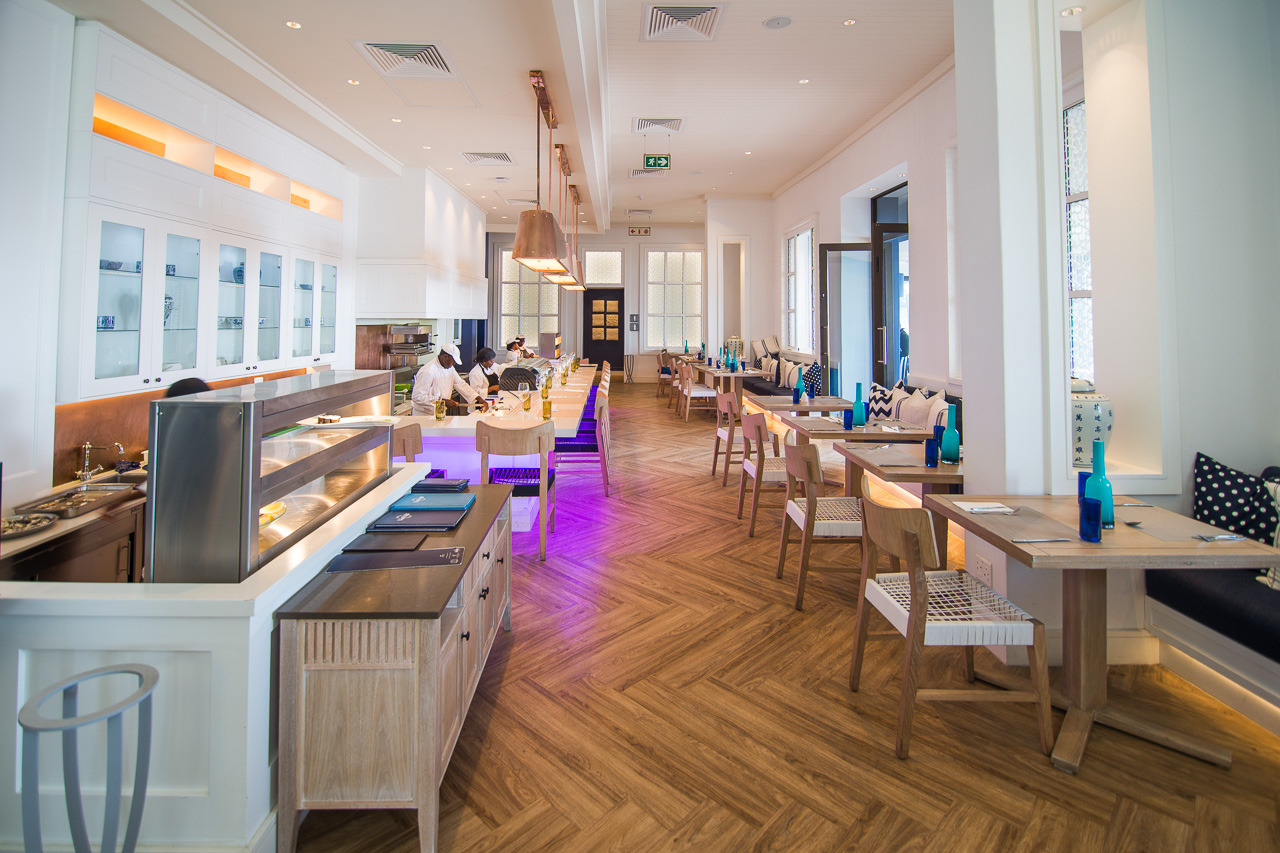
Accommodation The new Strand Hotel has set a new standard in Swakopmund. Uniquely located on the iconic and historic Swakopmund Mole and surrounded on three sides by the Southern Atlantic Ocean its 125 rooms and suites make this hotel one of the larger ones in town, but of those certainly the one with the best seaside location. All rooms have tea & coffee stations, mini-bars, hair-dryers, TV’s, free Wi-Fi Internet access, telephones and air-conditioning.
The Strand Hotel offers its residential guests and all casual visitors three exciting restaurants. The Farmhouse Deli is good for coffee, cake, sandwiches and fresh salads. The Brewer & Butcher welcomes beer and meat lovers. The Ocean Cellar caters for guests who prefer seafood, sushi, oyster and a glass of fine white wine.
The Strand Hotel is destined to become the social epicenter of Swakopmund for locals and tourists alike.
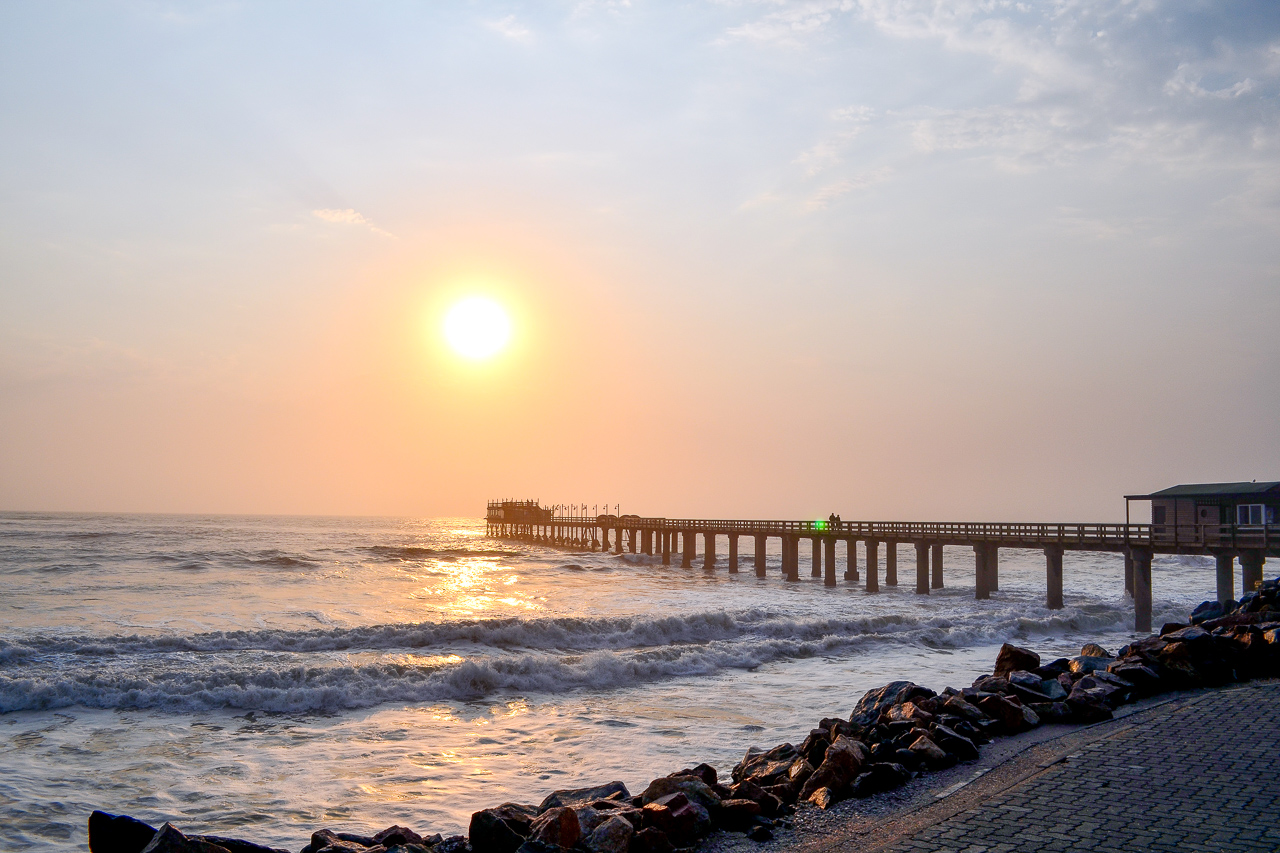
Swakopmund was the centre of German colonial rule, and relics of this chapter of its history can be found around every corner. Most noticeable of these is the long jetty, which stands witness to the German’s activities in this area and their attempt to create a usable port. Unfortunately, Swakopmund turned out to be wholly unsuitable for the task. Walvis Bay is a natural bay just 30 km south. It was occupied by the English as early as 1795, and later became a fish-processing industrial town under South African rule.
Swakopmund is charming. The old part of town is very pretty and offers several cafes, bakeries and, of course, the unavoidable beer houses. Time appears to have stood still in many parts, and it’s difficult not to keep rubbing your eyes in wonderment at the mix of German and African.
There’s a lot to do if you stay at Swakopmund: take a day trip southwards along the coast to Sandwich Harbour, hop on a boat at Walvis Bay and wait for the seals and pelicans to greet you, Kayak with seals, jump on a quad bike for a ride through the dunes, or just take a stroll along the beach and enjoy a tasty meal in one of the great restaurants. Swakopmund’s most famous landmark, the jetty, has been renovated and now boasts the appropriately named ‘Jetty 1905’ restaurant at its end.

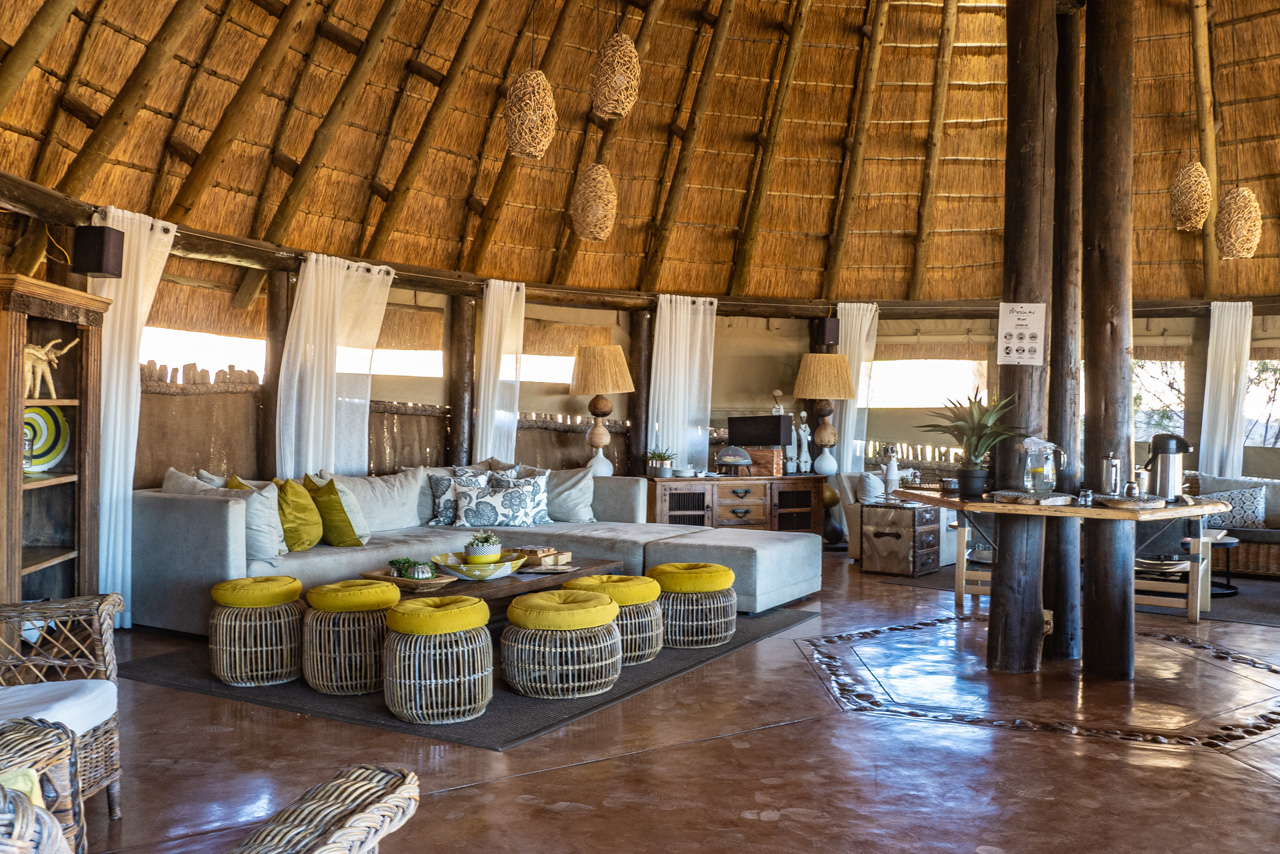
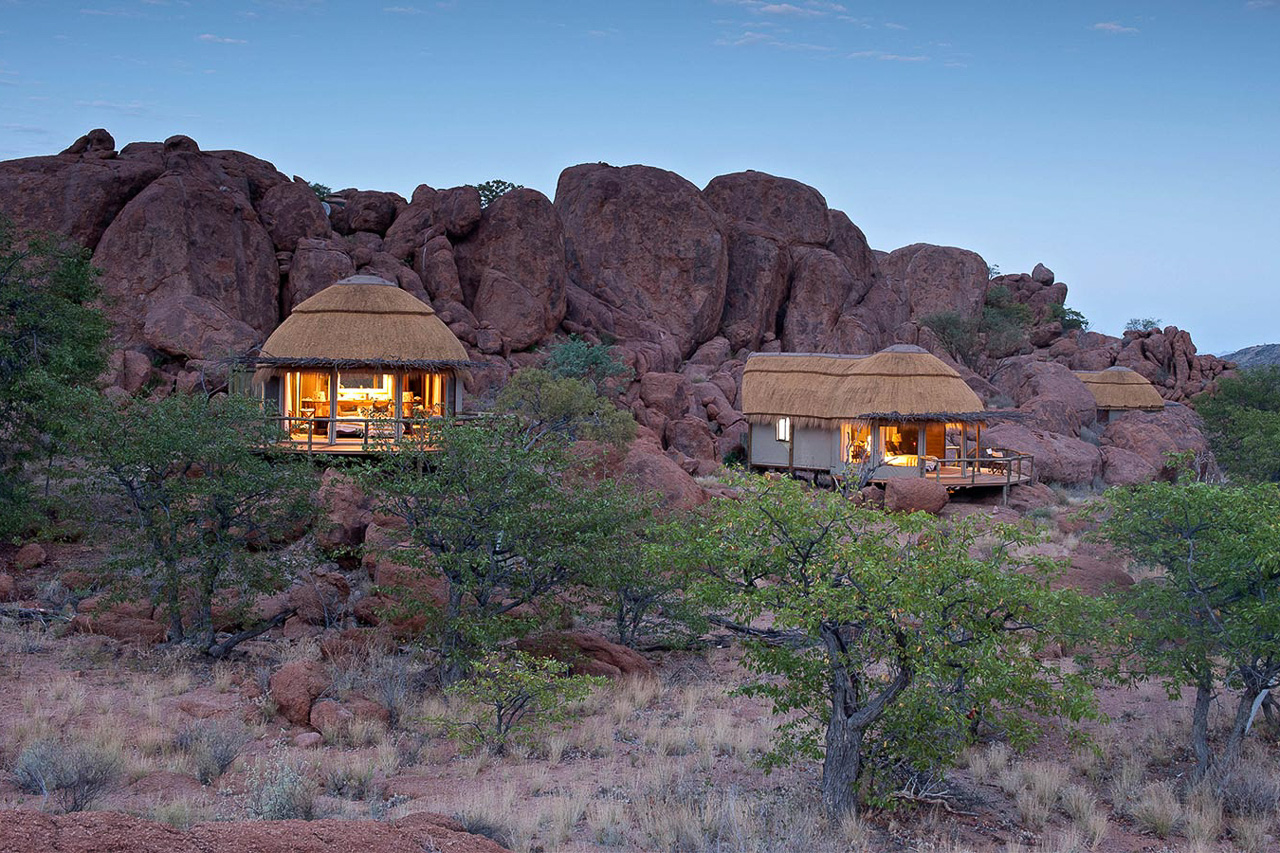
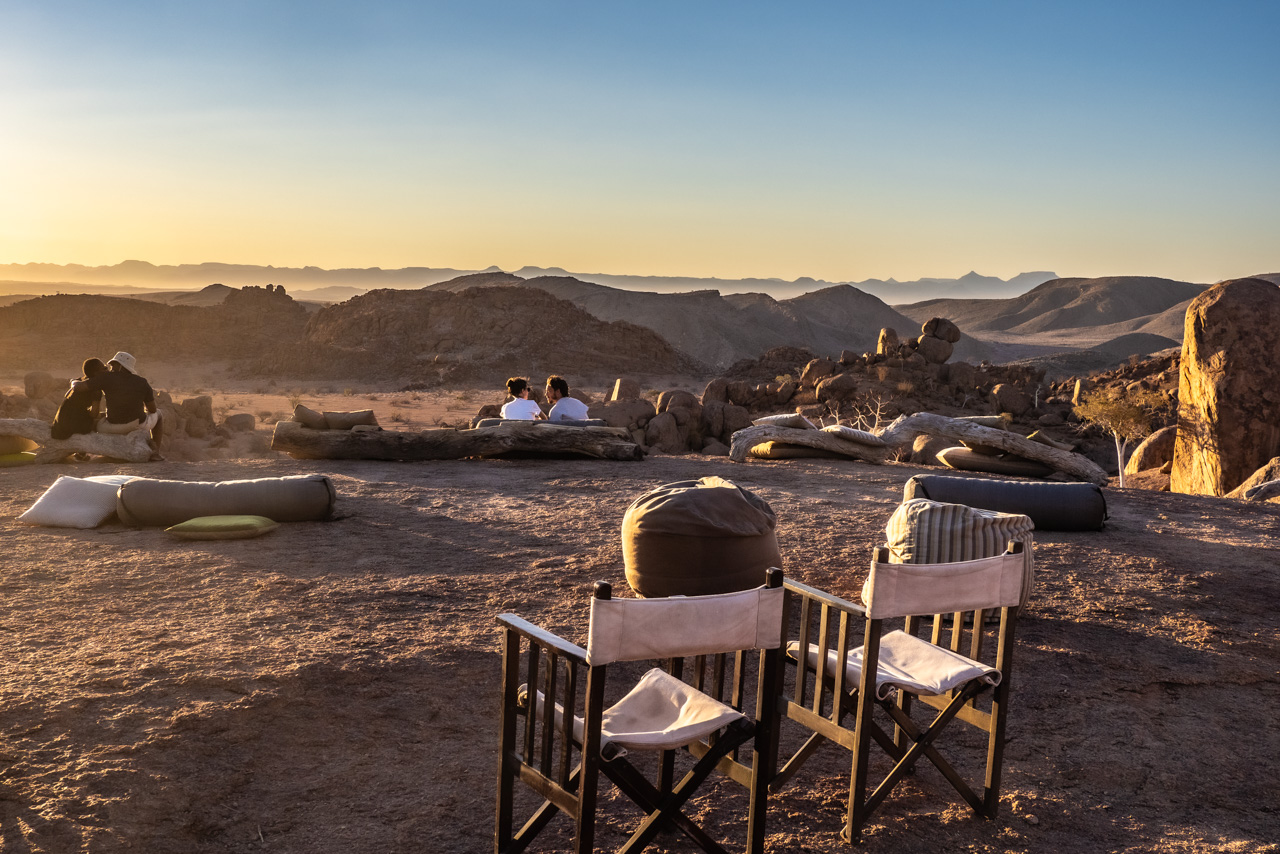
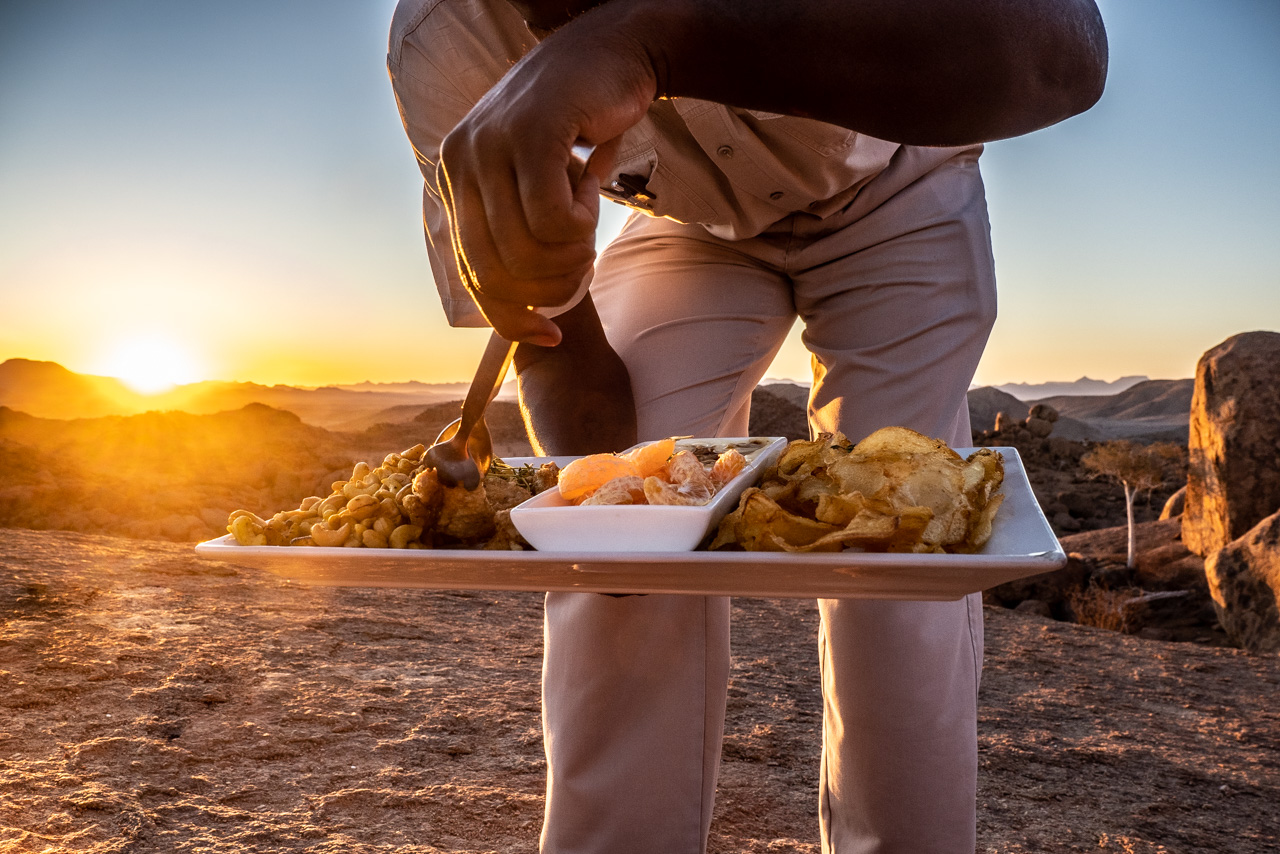
Accommodation
Mowani Mountain Camp comprises 12 charming rooms with high thatched roofs and comfortable verandas. The dome-like main roof leaves a window to the sky above the beds, stargazing from the bed so to say. The rooms are nestled between rounded boulders and blend in seamlessly with their surroundings. The room categories are defined by the quality of the view - accordingly there are 4 Superior View Rooms (No 1-4) with sunset view, 3 View Rooms (No 5-7) with view into a hidden valley and 5 Standard View Rooms (No 8-12). Some of the rooms have been extended with a canopy, under which a dome tent is placed, accommodating two children. Alternatively, these beds can be added to the room if parents prefer.
Mowani also offers a Luxury Room, a Mini Suite and the Mountain Suite with butler service, lounge and private dining area. These three rooms are larger and offer more privacy than the other rooms, but only the Mountain Suite stands out with a truly magnificent view.
The central area includes a small rock swimming pool with great views, lounge, restaurant and an extra wifi lounge. In the evening most guests visit the rock-top viewing plateau to enjoy the sunset. The sundowner drink is added to the view upon request.
Just across the road lies Camp Kipwe, Mowani‘s sister camp.
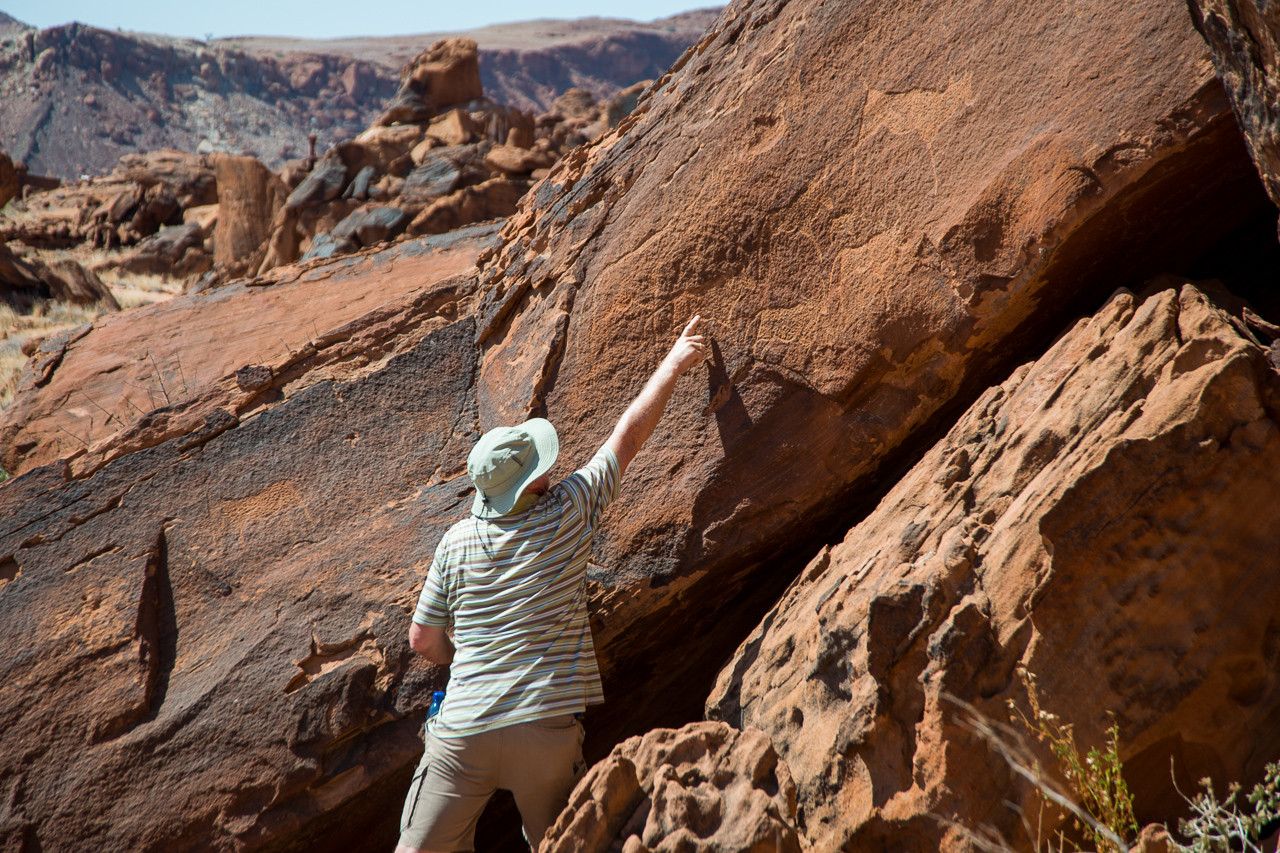
Twyfelfontein was declared a World Heritage Site in 2007 because of its significance as one of the most important sites of African rock engravings. The area is home to one of the few watering holes in the entire region, and one which the local farmers didn’t find particularly reliable: roughly translated, the name Twyfelfontein means ‘sometimes there’s water, sometime’s there isn’t’!
Today, some 40’000 guests from around the globe visit the rock engravings, which has made Twyfelfontein one of Namibia’s destination hotspots and therefore quite busy – visitors can’t expect to have the rock engravings all to themselves.
This region had been familiar to its ancient residents for a long time: they gathered close to the only source of water during the dry season, carried out their rituals, and drew and carved their experiences onto and into the slabs of rock around them. The naturally occurring iron oxide in the sandstone formed a protective layer (the so-called ‘desert varnish’) over the rock engravings. This layer has slowed down the weathering process and allowed us to admire these thousands-of-years-old works of art today. Many of the engravings depict hunting scenes with giraffe, antelope, zebra, ostrich, rhino, elephant and lion – and interestingly enough, also a seal! Humans are rarely depicted. The drawings are often surrounded by geometric patterns.
To avoid contamination and vandalism, guests may only visit the area with a guide, who will highlight the most famous motifs, including the lion with a kink in its tail and the dancing kudu. The tour takes about an hour for the first motifs, and a further hour if you wish to see the rest. It is best to visit in the early morning or late afternoon in order to avoid the worst of the heat.
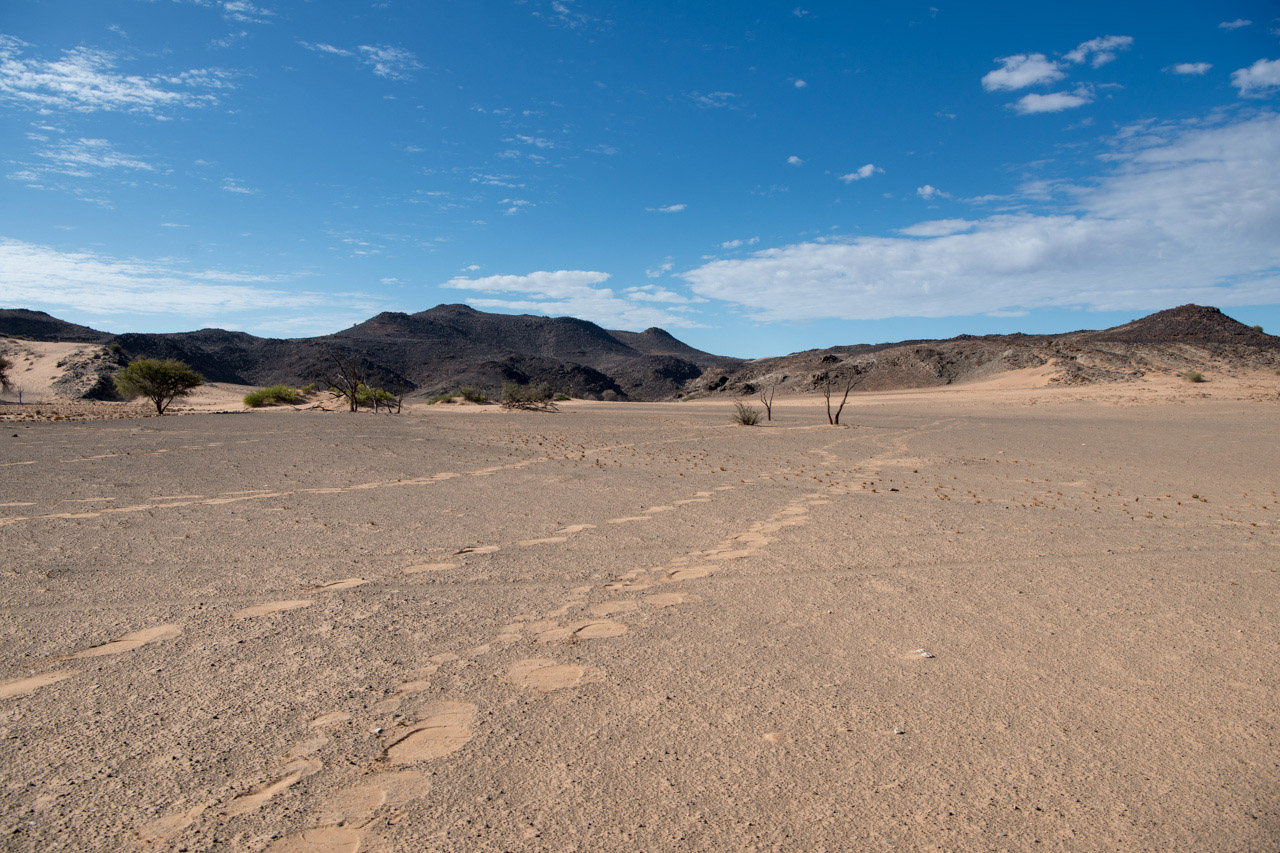
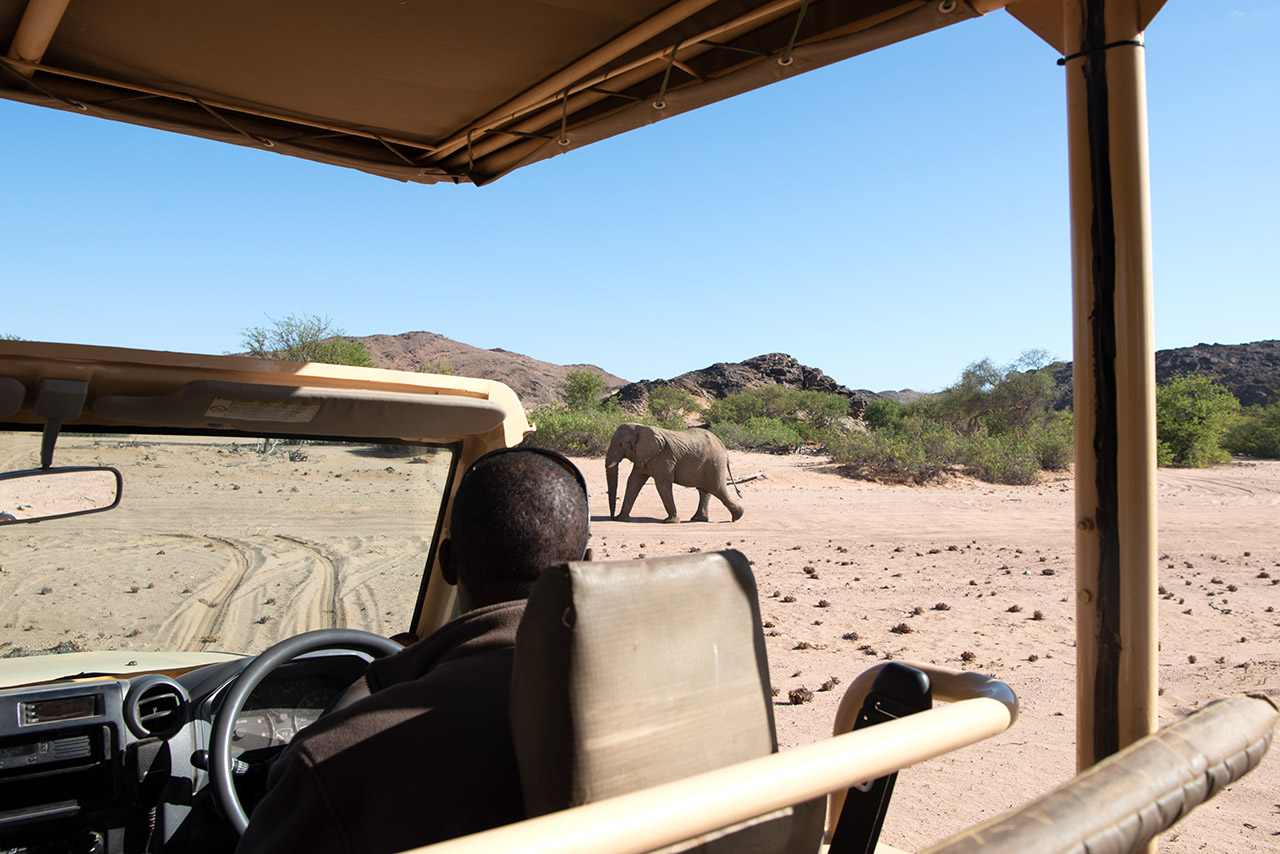
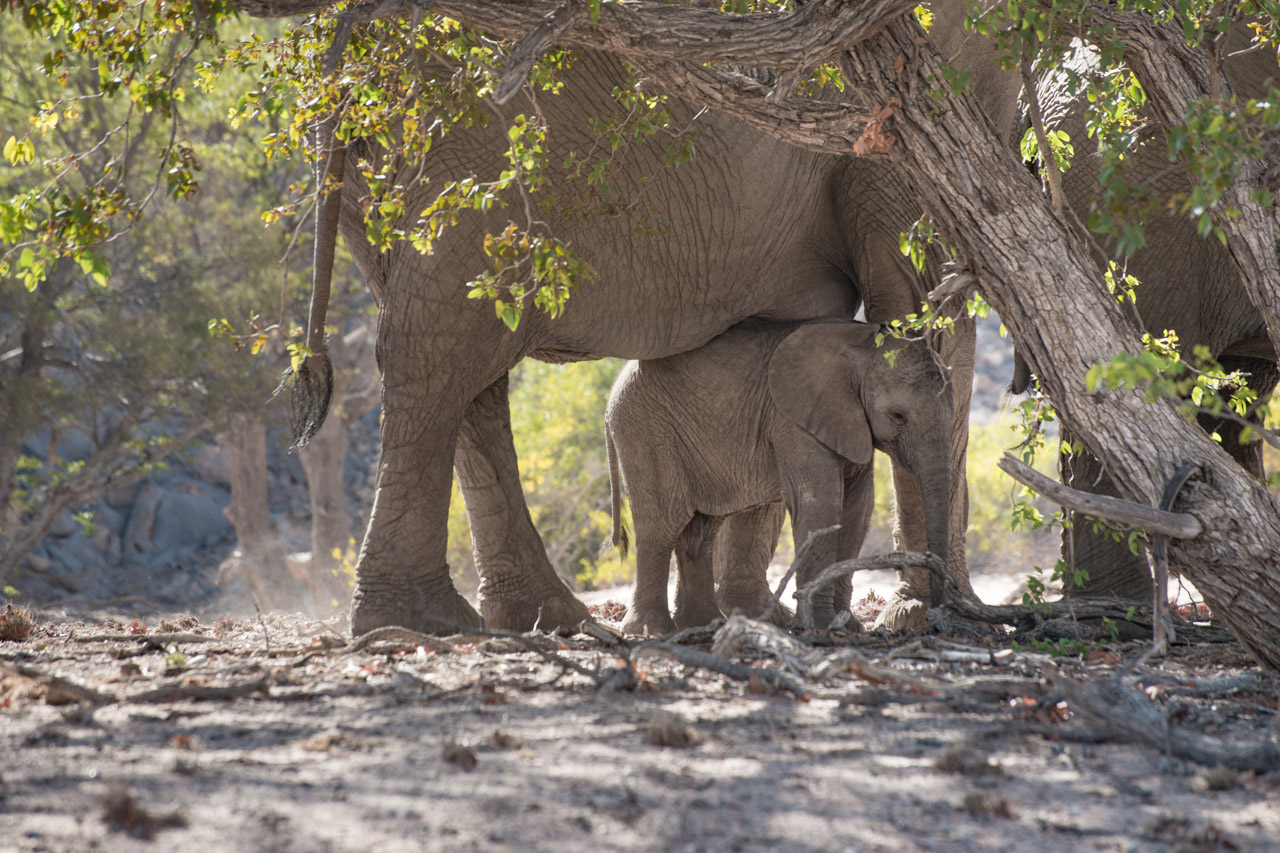
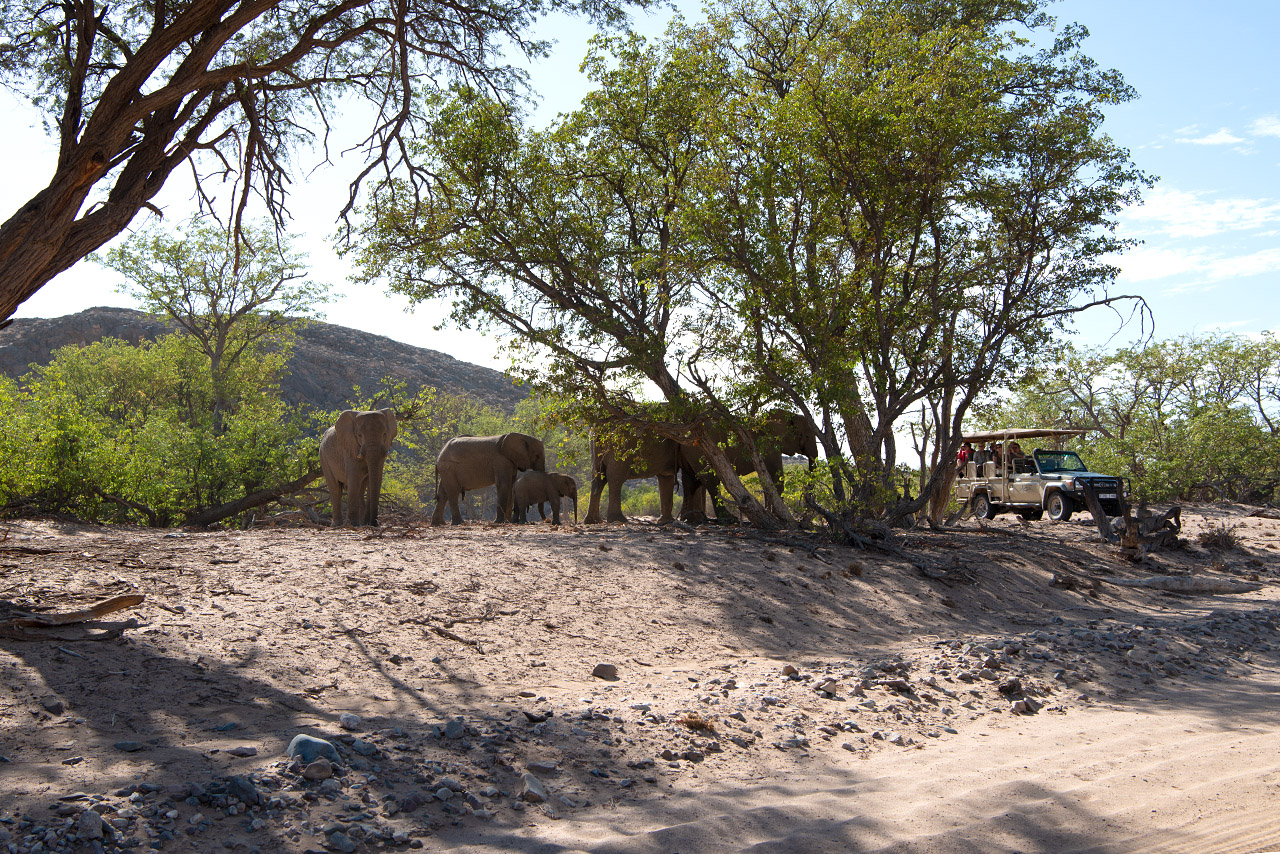
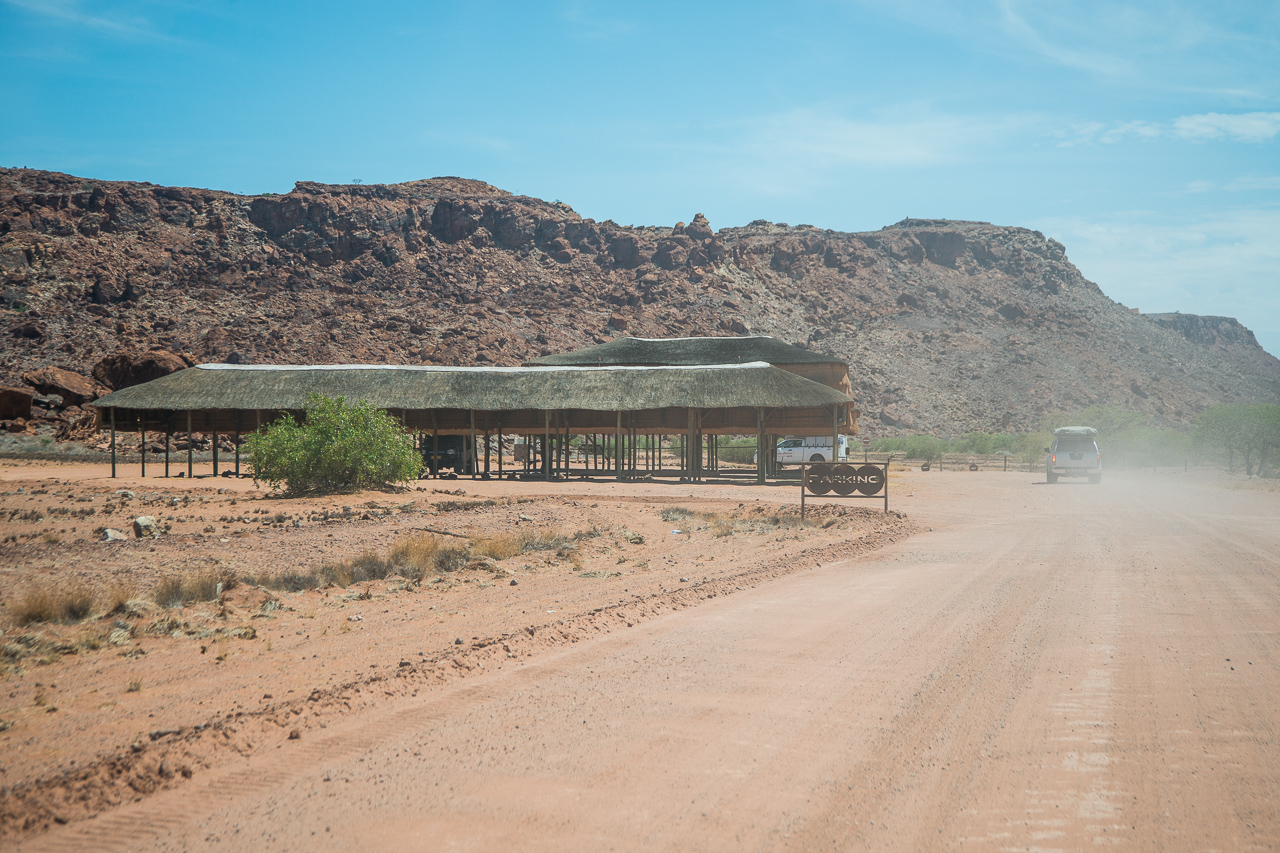
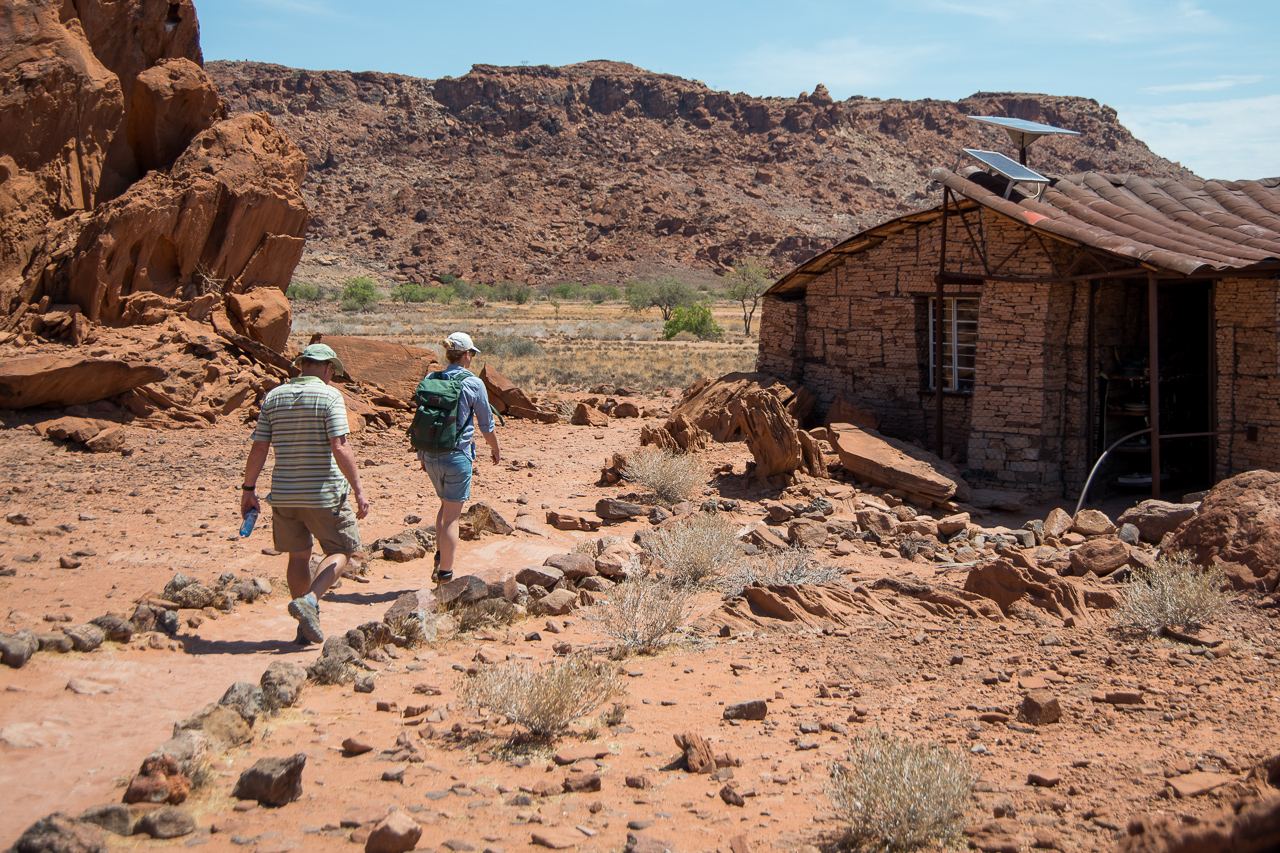
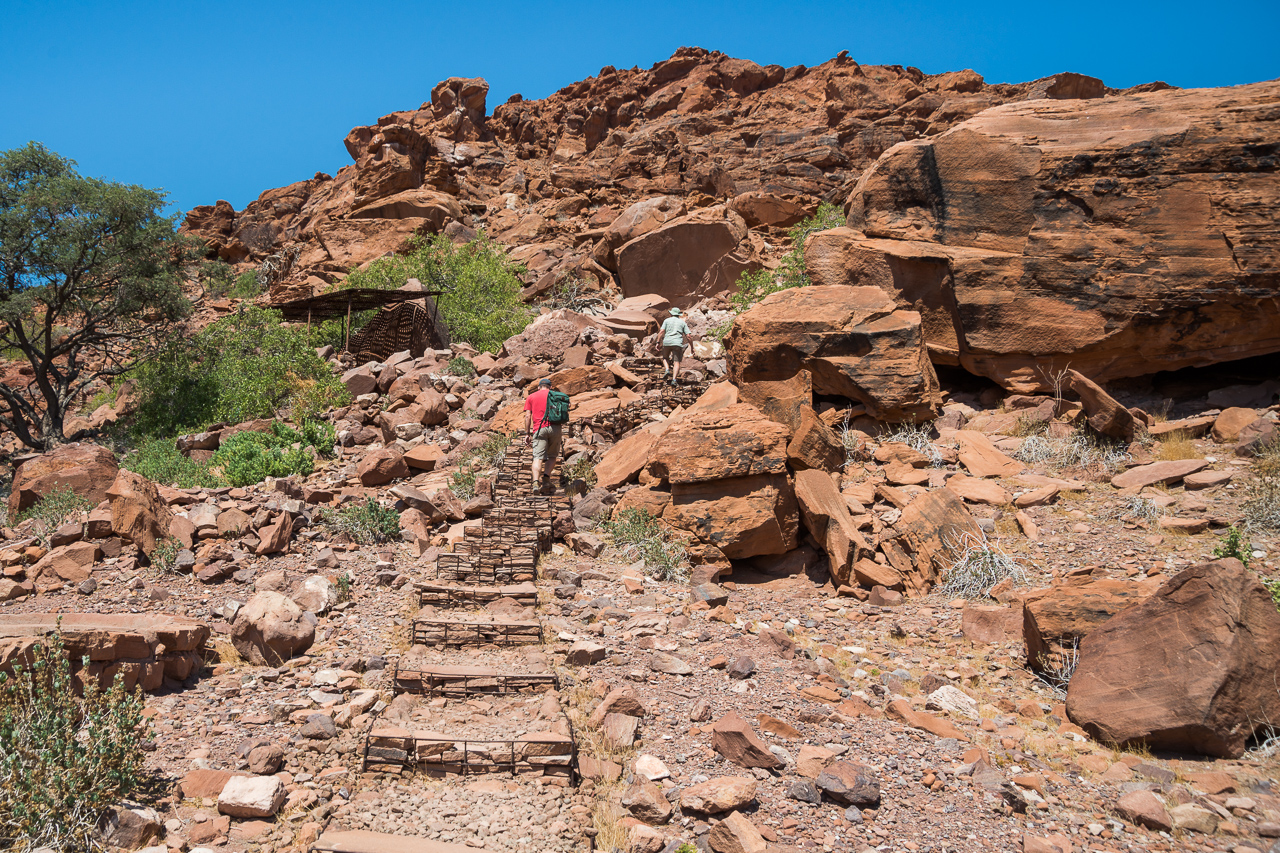
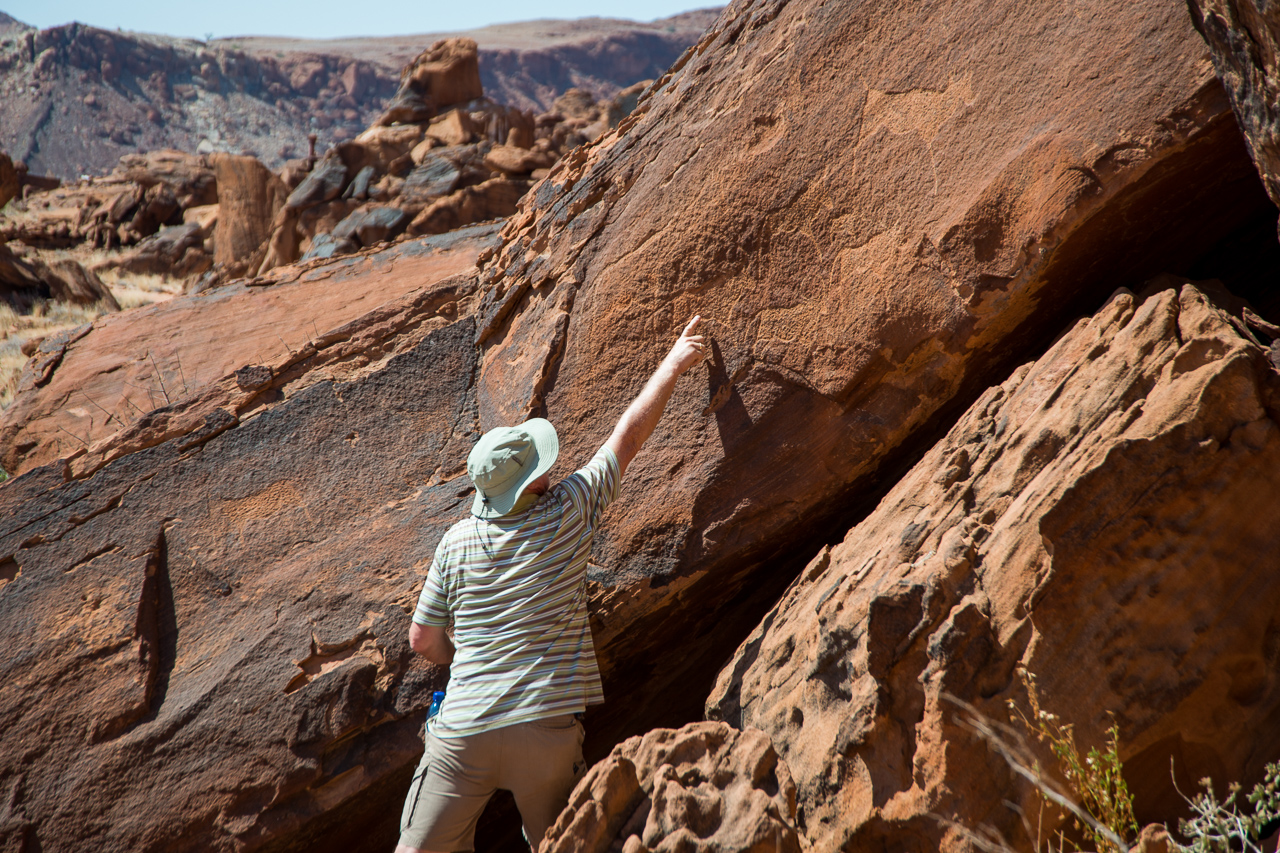
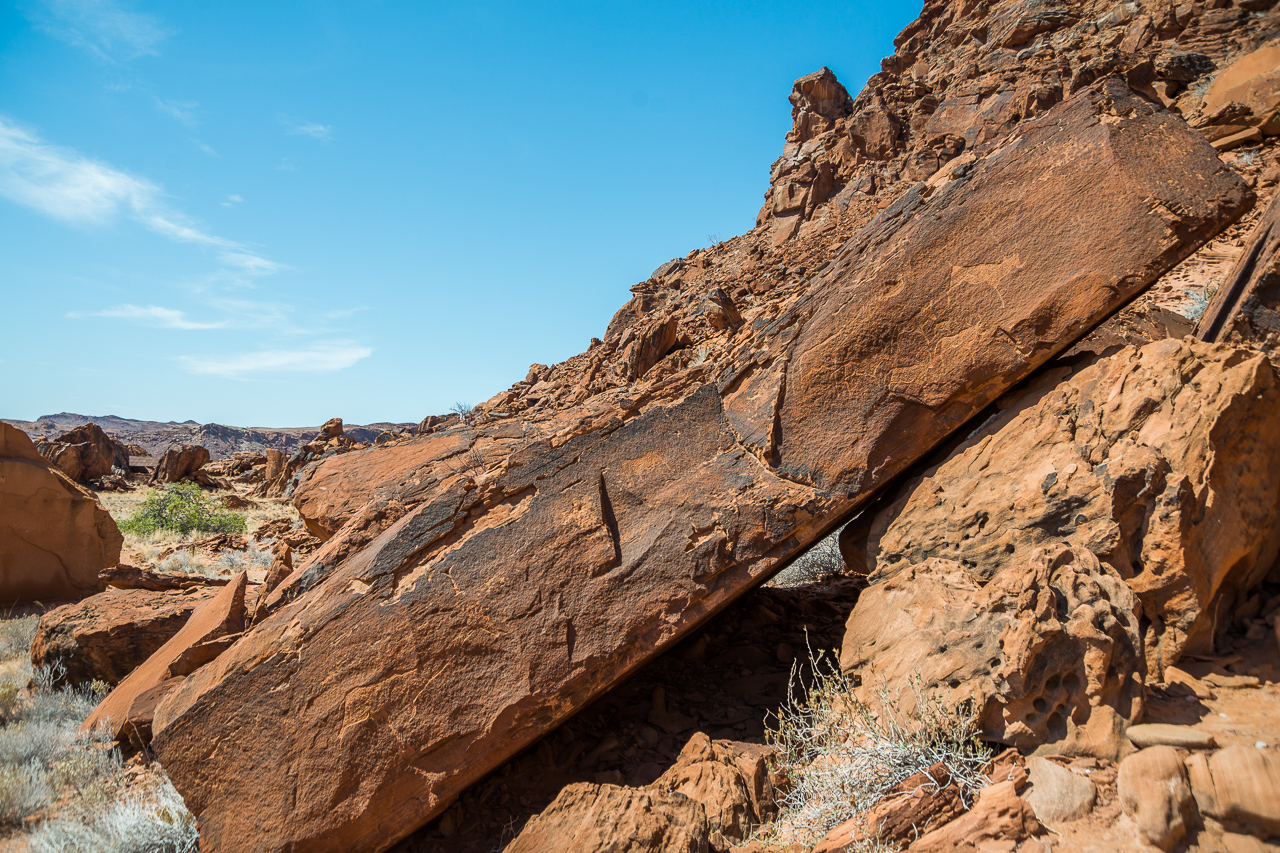
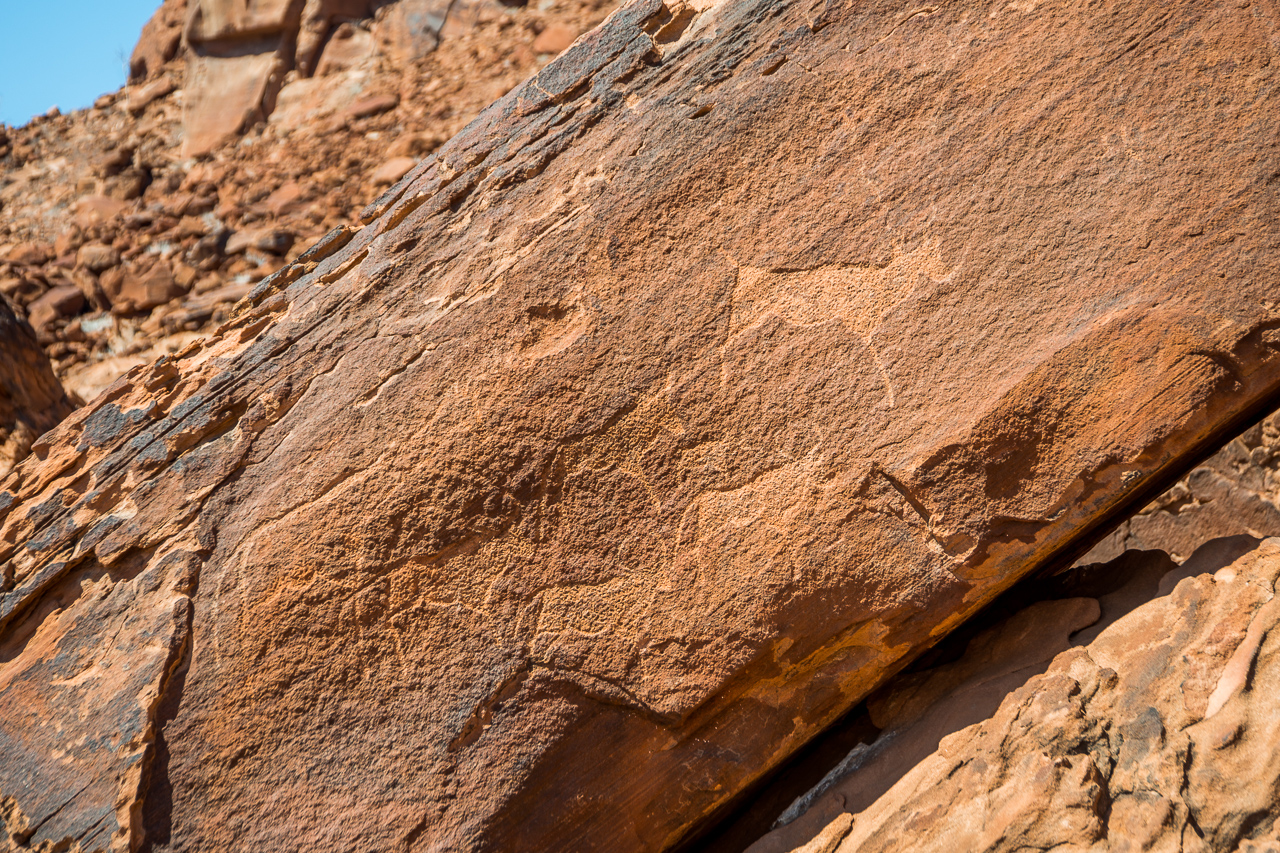

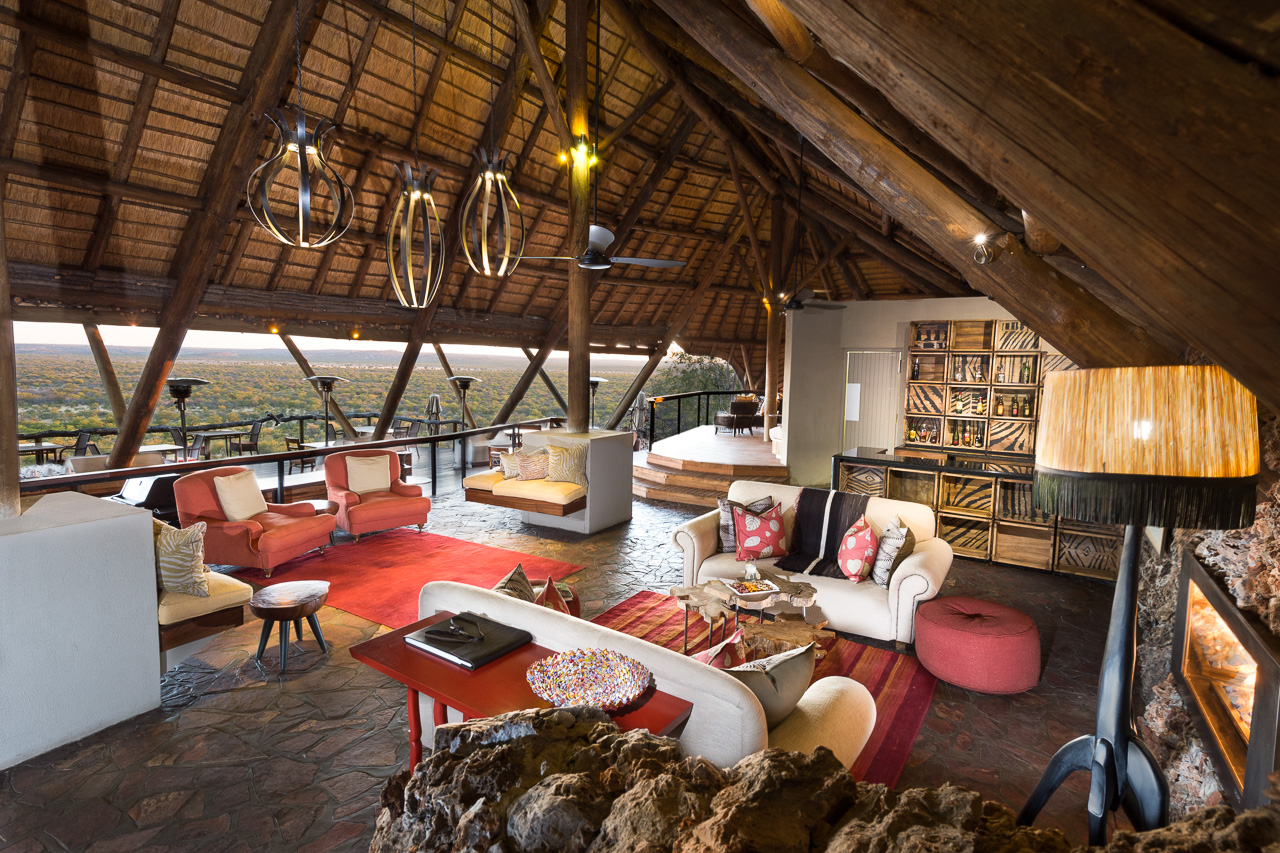
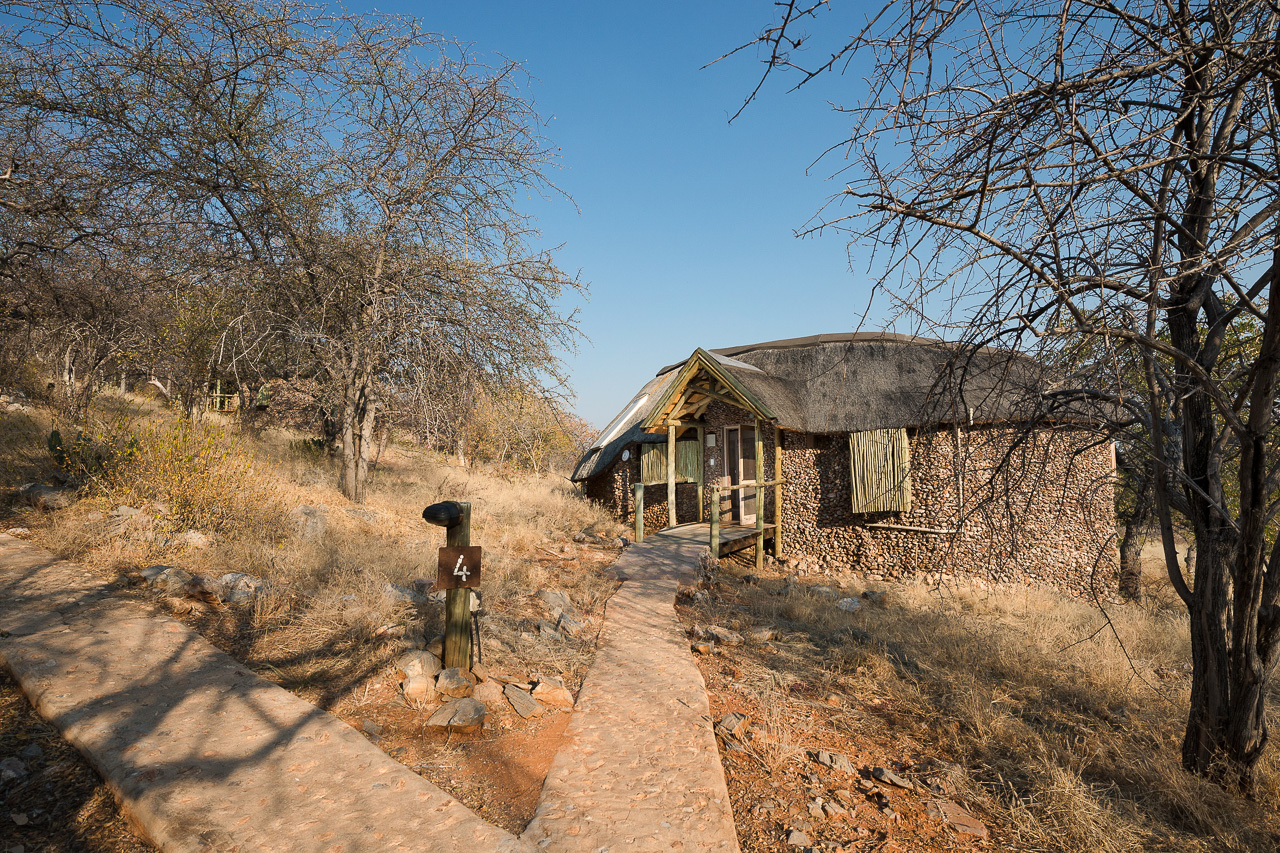
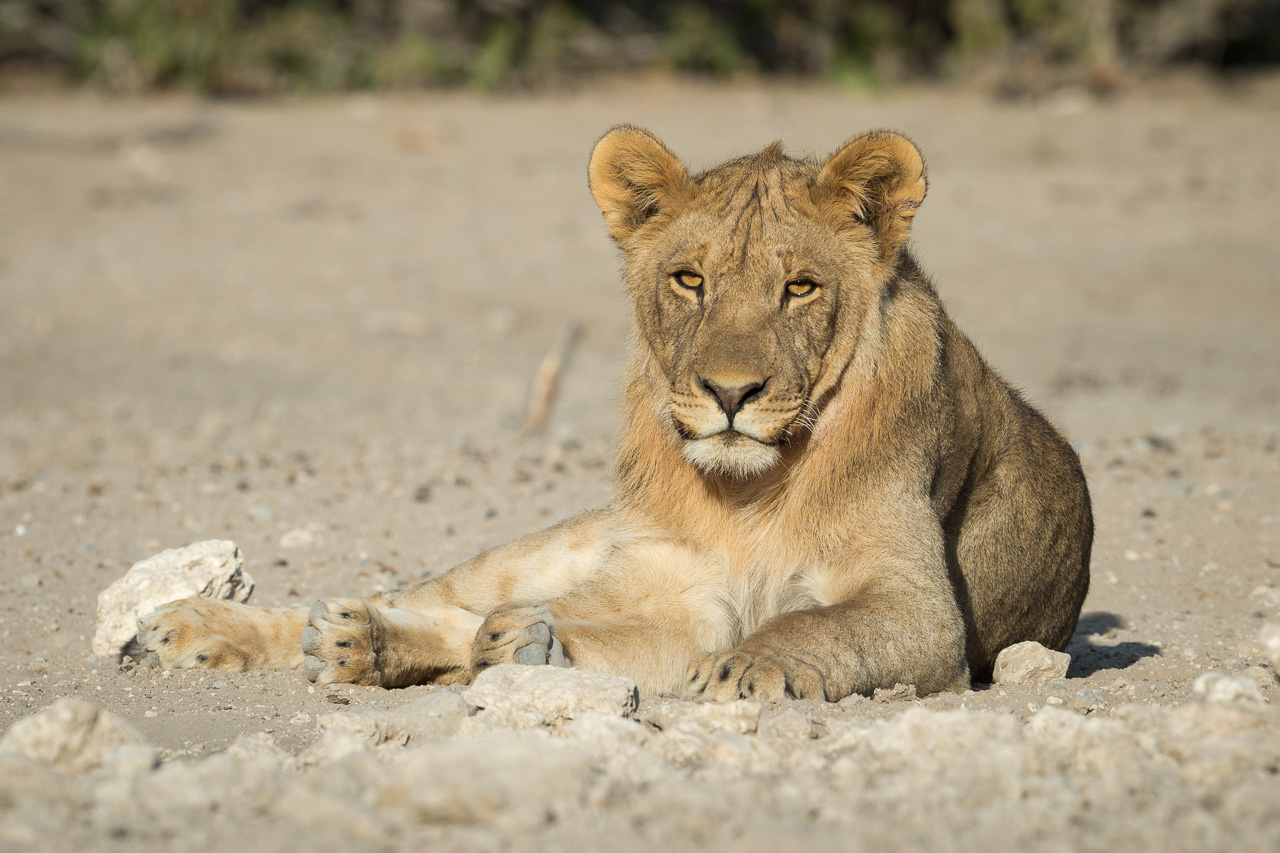

Accommodation
Constructed on a small hill, the lodge's fourteen pleasant, thatched stone houses with en-suite bathrooms and air-conditioning are spacious and comfortable. Each room has a beautiful terrace with loungers and an outdoor shower. The slightly raised main building offers a fantastic view of the waterholes. Meals are often served on the veranda, from where guests can continue to enjoy the spectacular vistas.
Andersson's Camp, Little Ongava and Ongava Tented Camp are also situated in the Ongava Game Reserve.
The Etosha National Park is one of the most important nature reserves in southern Africa. It exists since 1907 and covers an area of 22,270 km². The central and eastern sections consist mainly of various silvery-white shining salt pans, which have made Etosha famous. In the dry season the park, the animals and the vehicles are covered in a whitish haze of salt dust.
On the southern shore of the huge Etosha Pan (130 x 50 km) there are several waterholes, which magically attract the animals from the surrounding area during the dry season. The three large state camps Okaukuejo, Halali and Namutoni connect Anderson's Gate in the south with the von Lindequist Gate in the east. The western part towards Galton Gate is much more wooded and less frequented by visitors, but it also offers less trails to drive around and find wildlife.
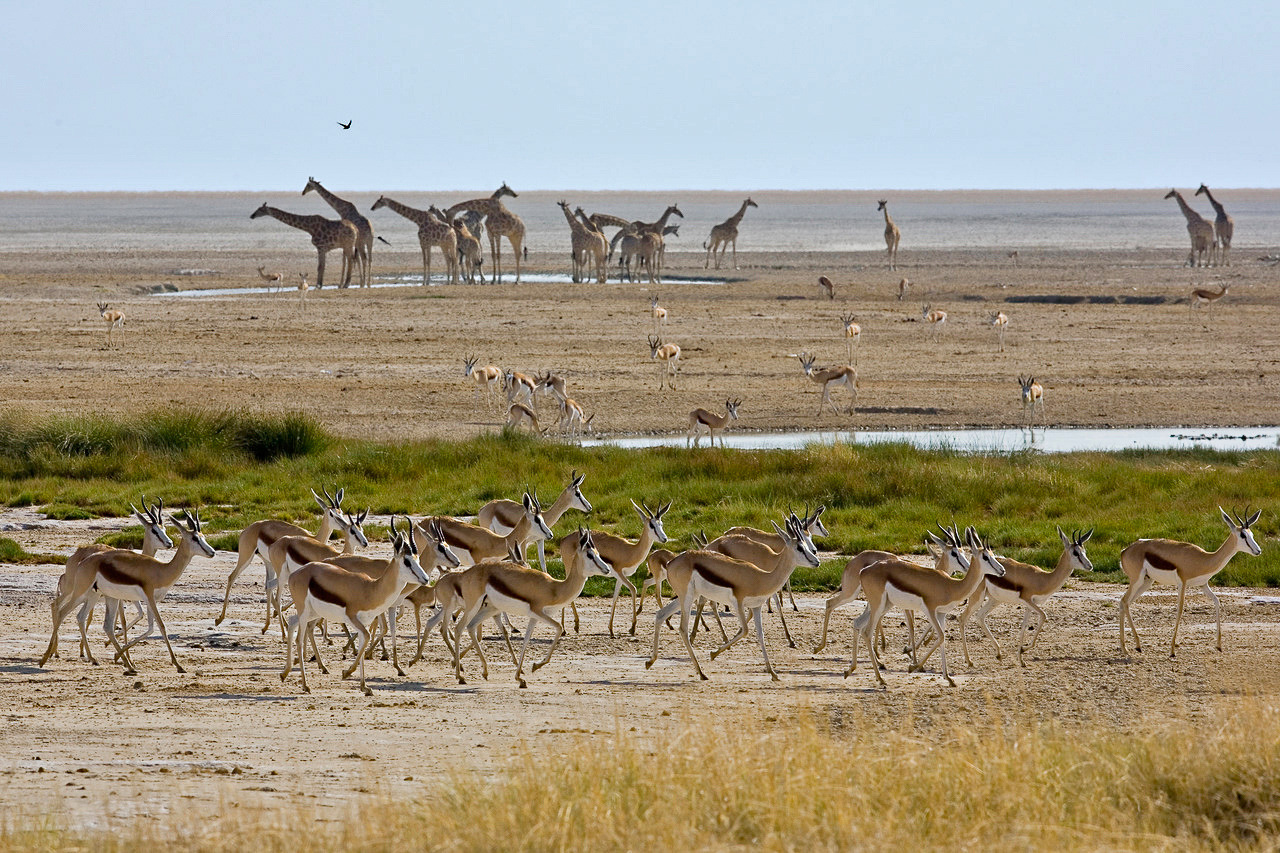
The park thrives mainly on these artificial waterholes, which attract countless animals in the dry season. With the onset of the rainy season, the animals are much less dependent on these waterholes and more difficult to find. The Etosha Pan itself can then contain up to 10 cm of water, and the park becomes more exciting for birdwatchers.
There are a few government camps in the park itself, most of which offer a less favourable experience. The good accommodation is located outside the park in private areas, in the east these are Mushara and Onguma, in the south it is the private Ongava area.
Namutoni and Okaukuejo are the two main camps at the eastern Von Lindequist Gate and the southern entrance to Etosha at Andersson's Gate respectively. The quieter Halali Camp is situated between the two. The state camps are very large and offer chalets, campsites, petrol stations and large picnic areas. If you are looking for a private experience, this is certainly not the place for you. Most of the roads run between these three camps and lead visitors to the various waterholes.
The western part of Etosha opened to visitors in 2011. This part of the park is very different from the area around the Etosha Pan, it has many more bushes and trees, less traffic, but also less to see.

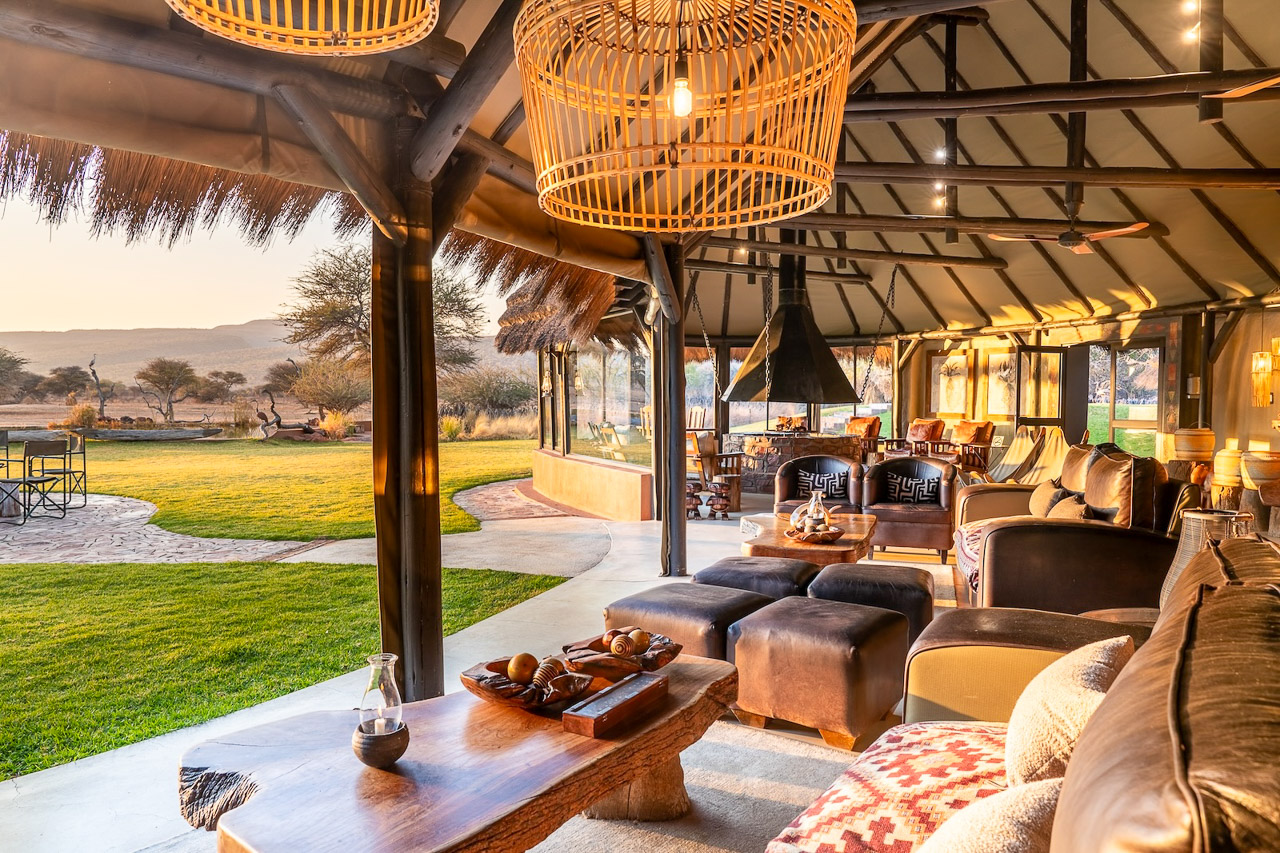
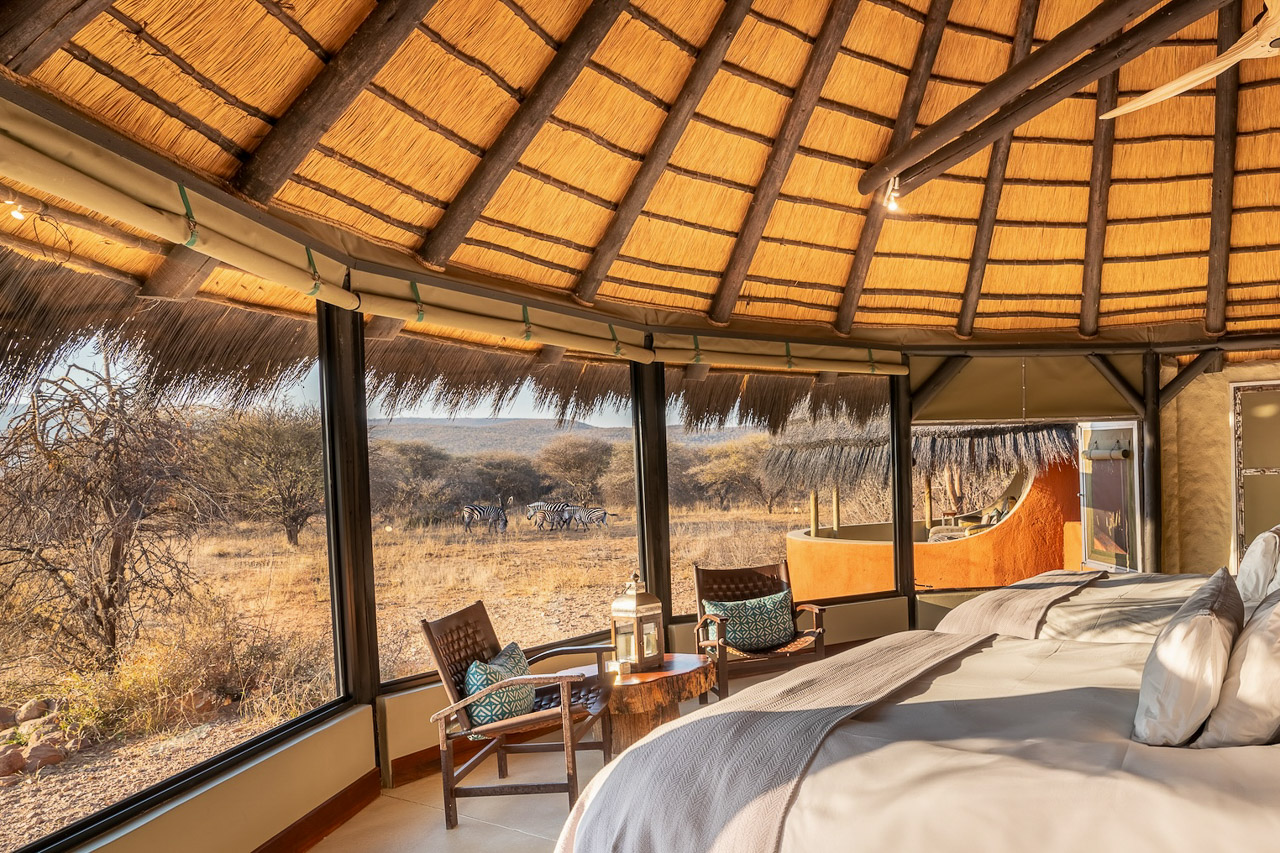
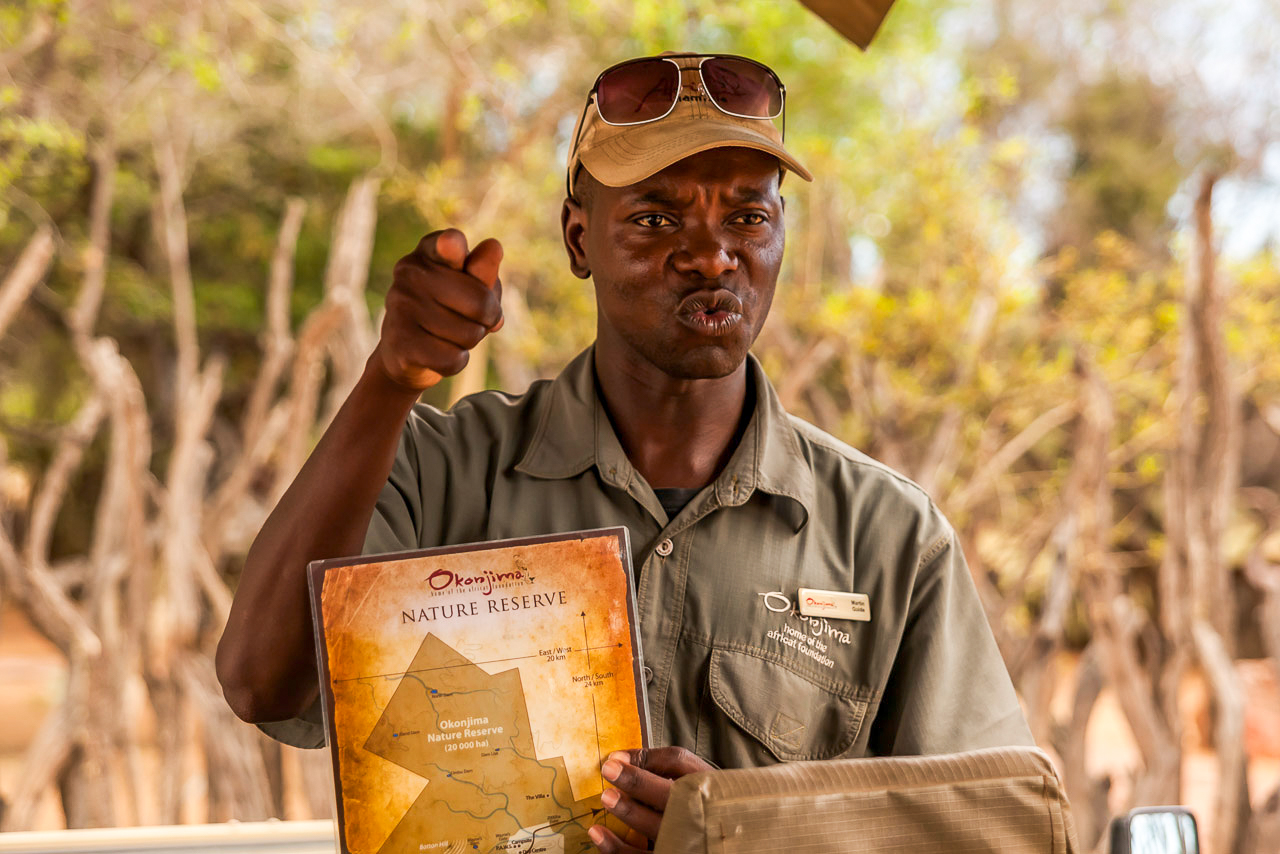
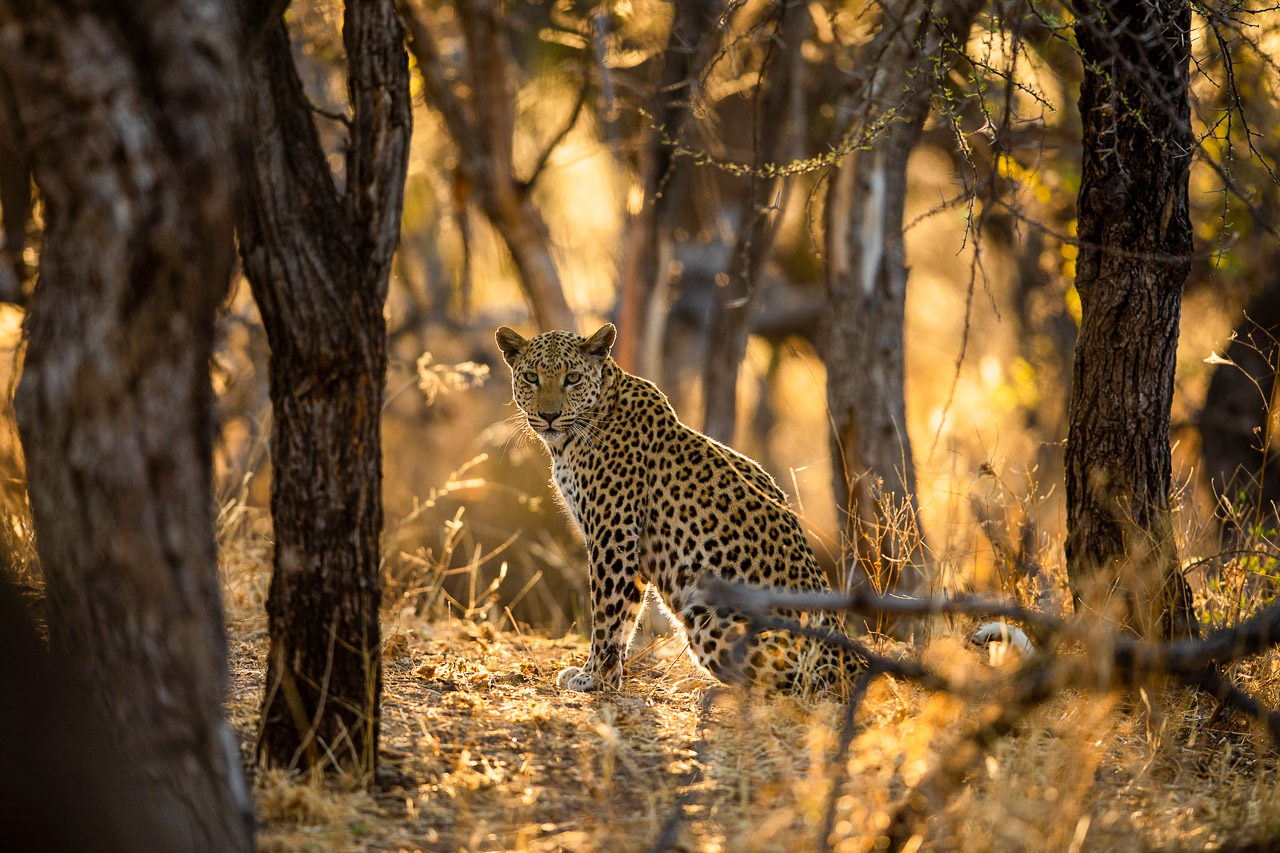
Accommodation
Okonjima is run by the Hanssen family. Wayne, Donna and Rosalea Hanssen bought Okonjima from their parents, Val and Rose, in 1993 and turned the farm into a well-known conservation project.
Okonjima is the home of the AfriCat Foundation, a not-for-profit organisation dedicated to the rescue and preservation of Namibia’s big cat population. It has rescued over 1000 big cats since 1993 and released 86% of them back into the wild.
Okonjima Bush Camp is located 3 km from Plains Camp (the main camp) on the edge of the game reserve. This lodge offers a greater degree of comfort and is used by us as a fly-in safari destination for guests who wish to make a stopover here and learn more about the AfriCat Foundation.
Spaced a minimum of 80 metres apart, all eight chalets offer maximum privacy and a very generous 105 m2 of living space. The chalets are built in a traditional African style with clay walls and thatched roofs. The lodge also offers a swimming pool.
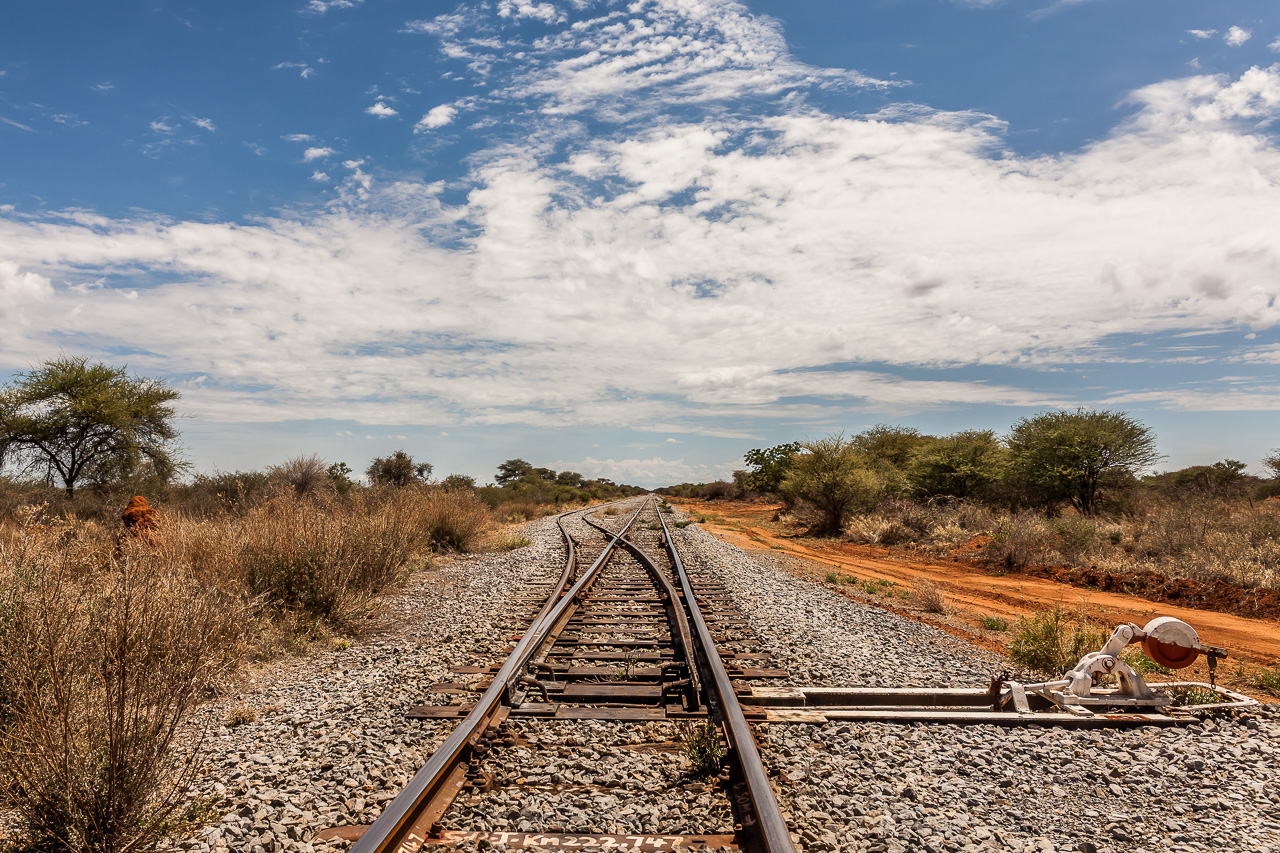
Close to the reserve at Otjiwarongo is the Okonjima Game Reserve, which is also committed to protecting wildlife. Okonjima is home to the AfriCat Foundation, which cares for cheetah and leopard that have come into conflict with farmers.
Okonjima is situated about half way between Windhoek and Etosha. It boasts its own 200 km² game reserve with hyena, wild dog, zebra, wildebeest, giraffe, kudu, oryx and various other kinds of antelope.
Okonjima offers the best chance of coming face to face with a cheetah or leopard. Some of the animals are fitted with tracking collars, making them easier to find – but it’s still a great experience. We’re always happy to include Okonjima on our self-drive routes.

Basic Information
Individual journey. The journey will be planned on your preferred dates.
Duration 14 nights. Min 2 guests. Trip vice versa possible.
Includes all transfers from Windhoek to the hotels/camps to Windhoek
- Olive Grove: Luxury Room. Breakfast.
- Wolwedans Desert Lodge: Double Room. All meals, drinks (except premier brands), twice daily shared activities with one of the camp guides.
- Dead Valley Lodge: Double Room. All meals.
- Strand Hotel: Luxury Room. Breakfast.
- Mowani Mountain Camp: Standard Room. Dinner, breakfast. Visit the rock engravings of Twyfelfontein on your own. Includes elephant activity to find the desert adapted elephants.
- Ongava Lodge: Double Room. All meals. Game Drives on your own or bookable at the lodge.
- Okonjima Bush Camp: Double Room. All meals, drinks (except premier brands), laundry service, twice daily shared activities with one of the camp guides.
Learn more about these areas













